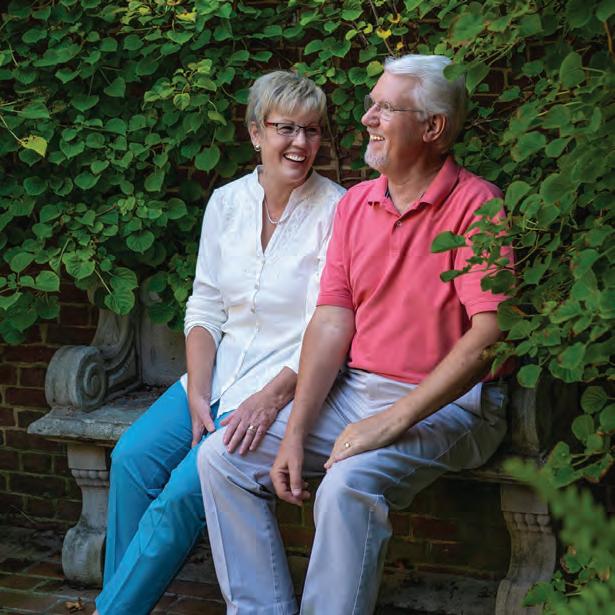Captivating Waterfalls



Experience high school differently. The Gatton Academy of Mathematics and Science offers gifted and talented high school juniors and seniors in Kentucky a chance to start college while finishing high school at Western Kentucky University. This two-year residential STEM program allows students to participate in college coursework full-time, pursue faculty-mentored research, study abroad, and thrive in a supportive community. With scholarships covering tuition, housing, and meals, students at Gatton can explore their interests in STEM. Explore your infinite possibilities at www.wku.edu/academy.

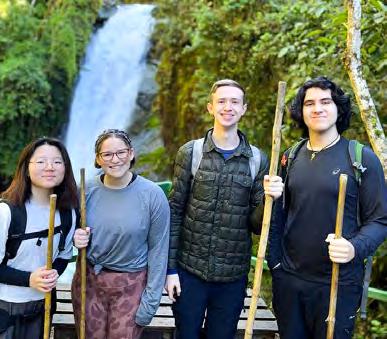



30 Equine U Several Kentucky colleges and universities offer programs that prepare students for careers in one of the state’s signature industries

38 He Ain’t Done Singin’ Yet After spending nearly 20 years in the ministry, Owensboro’s Jon Brennan has returned to his passion of singing country music
42 Outrageous, Audacious Genius
An exhibition and a documentary celebrate the 100th birthday of Kentucky artist and writer Henry Faulkner

Test your knowledge of our beloved
Commonwealth. To find out how you fared, see the bottom of Vested Interest.
1. Gordon Granger was the Union general who issued General Order No. 3 on June 19, 1865, informing the Black residents of Galveston, Texas, of President Abraham Lincoln’s Emancipation Proclamation. Granger rests in which Kentucky cemetery?
A. Lexington Cemetery
B. Louisville’s Cave Hill Cemetery
C. Frankfort Cemetery
2. Emancipation Day is Jan. 1, 1863, although the news didn’t reach Texas until June 19, 1865, (Juneteenth). In Kentucky— especially Hopkinsville, Russellville, Paducah and Allensville—freedom is celebrated on which day?
A. April 20
B. Oct. 27
C. Aug. 8
3. The Kentucky State Fair traces its beginnings to “a Cattle Show and Fair” organized by Col. Lewis Sanders in which city?
A. Lexington
B. Paris
C. Louisville
4. The grand finale of the Kentucky State Fair is what?
A. The deflating of Freddie Farm Bureau
B. The World’s Championship Horse Show
C. The last nibble of a Mike Linnig’s fish sandwich on a Krispy Kreme bun
5. True or False: The legendary Man o’ War originally was named My Man o’ War in honor of breeder August Belmont Jr., who was serving overseas in World War I.
6. Upset, the only horse to beat Man o’ War, was bred by poloplaying millionaire Harry Payne Whitney’s legendary Lexington farm, now the location of which well-known shopping area that bears the farm’s name?
A. Palomar
B. Lansdowne
C. Hamburg
7. Which hit by Bill Monroe and the Blue Grass Boys is the B-side of Elvis Presley’s “That’s All Right?”
A. “Blue Moon of Kentucky”
B. “Mule Skinner Blues”
C. “Stoney Lonesome”
8. The biggest hit of Hyden’s Osborne Brothers is known as the official song of which University of Kentucky rival?
A. Alabama
B. Georgia
C. Tennessee
9. According to the Laid-Back Country Picker, the stage name of Lawrence County social studies teacher David Price, a “Magoffin County Cadillac” is actually what type of car?
A. Lincoln Town Car
B. Ford Crown Victoria
C. Toyota Corolla
10. Which “Kentucky hothead”— disliked by most everyone he encountered—often is blamed for charging into an ambush at Blue Licks (Robertson County) in 1782?
A. Lyman Draper
B. Hugh McGary
C. Simon Kenton
Celebrating the best of our Commonwealth
© 2023, Vested Interest Publications
Volume Twenty-Six, Issue 6, August 2023
Stephen M. Vest
Publisher + Editor-in-Chief
Editorial
Patricia Ranft Associate Editor
Rebecca Redding Creative Director
Deborah Kohl Kremer Assistant Editor
Brooke Raby Special Projects Coordinator
Ted Sloan Contributing Editor
Cait A. Smith Copy Editor
Senior Kentributors
Jackie Hollenkamp Bentley, Jack Brammer, Bill Ellis, Steve Flairty, Gary Garth, Mick Jeffries, Kim Kobersmith, Brigitte Prather, Walt Reichert, Tracey Teo, Janine Washle and Gary P. West
Business and Circulation
Barbara Kay Vest Business Manager
Jocelyn Roper Circulation Specialist
Advertising
Lindsey Collins Senior Account Executive and Coordinator
Kelley Burchell Account Executive
Teresa Revlett Account Executive
For advertising information, call 888.329.0053 or 502.227.0053
KENTUCKY MONTHLY (ISSN 1542-0507) is published 10 times per year (monthly with combined December/ January and June/July issues) for $25 per year by Vested Interest Publications, Inc., 100 Consumer Lane, Frankfort, KY 40601. Periodicals Postage Paid at Frankfort, KY and at additional mailing offices.
POSTMASTER: Send address changes to KENTUCKY
MONTHLY, P.O. Box 559, Frankfort, KY 40602-0559.
Vested Interest Publications: Stephen M. Vest, president; Patricia Ranft, vice president; Barbara Kay Vest, secretary/treasurer. Board of directors: James W. Adams Jr., Dr. Gene Burch, Gregory N. Carnes, Barbara and Pete Chiericozzi, Kellee Dicks, Maj. Jack E. Dixon, Bruce and Peggy Dungan, Mary and Michael Embry, Judy M. Harris, Greg and Carrie Hawkins, Jan and John Higginbotham, Frank Martin, Bill Noel, Michelle Jenson McDonnell, Walter B. Norris, Kasia Pater, Dr. Mary Jo Ratliff, Barry A. Royalty, Randy and Rebecca Sandell, Kendall Carr Shelton and Ted M. Sloan.
Kentucky Monthly invites queries but accepts no responsibility for unsolicited material; submissions will not be returned.

First, let me say how much I enjoy reading Kentucky Monthly, especially how it regularly features Kentucky’s diversity and uniquely Southern culture. I liked the article “Keepin’ It Rural” (April issue, page 16). It points out many positive reasons why conservation easements have worked for some landowners. It makes it seem that resources are just standing by ready to assist. It’s very encouraging!
I’ve been looking into conservation easements for well over a year now. I’ve read several articles about them and done my online research, but for me, the process has stalled. It’s so difficult getting some of my initial questions answered. I’m hoping it will be gravy from there, but so far, just making contacts has been a beast. I’m not discouraged. I’m lamenting and want to put this out there in case other landowners are running into the same thing.
Conservation easements may be a great idea for your property, but you must be extremely persistent throughout the entire process.
Ken Bell, Marion County
Owen County
Favorite Georgia Green Stamper graduated with my husband (“The Bard of Natlee,” April issue, page 36).
I have all her books and have read them several times. Always glad to see her and have time to visit.
Joyce DuVall, Owen County
I loved every page of the May issue, and to Bill Ellis for his article (page 58) “Pet Peeves,” I shout, “Bravo!” to each peeve and have a couple to add.

Working for a large corporation for 40-plus years, I learned to despise the use of the word “opportunity” to replace
“problem.” I learned to shudder with every “opportunity” mentioned, when I would gladly tackle any problem.
Another one that grates on my nerves is: “Now, let’s unpack this.” What?! Have we been on vacation?
Thank you, Mr. Ellis!
Mona Milby, Greensburg
I loved Bill Ellis’ column on pet peeves. One wouldn’t think that a mild-mannered lad such as I would have any, but let me count the ways:
n When my daughter was in grade school, all the little girls would respond to an inquiry or comment with: “Actually, …”
n Then came my son’s favorite introduction to every sentence: “So, ….”

n My lbiggest pet peeve of all is people who don’t know what “you’re welcome” means and must respond with “no problem.”
James Miller, via email
Even when you’re far away, you can take the spirit of your Kentucky home with you. And when you do, we want to see it!




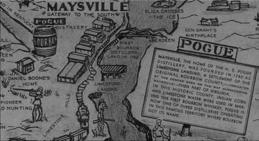



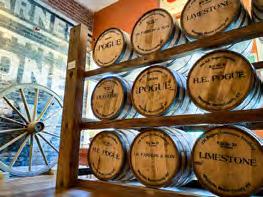
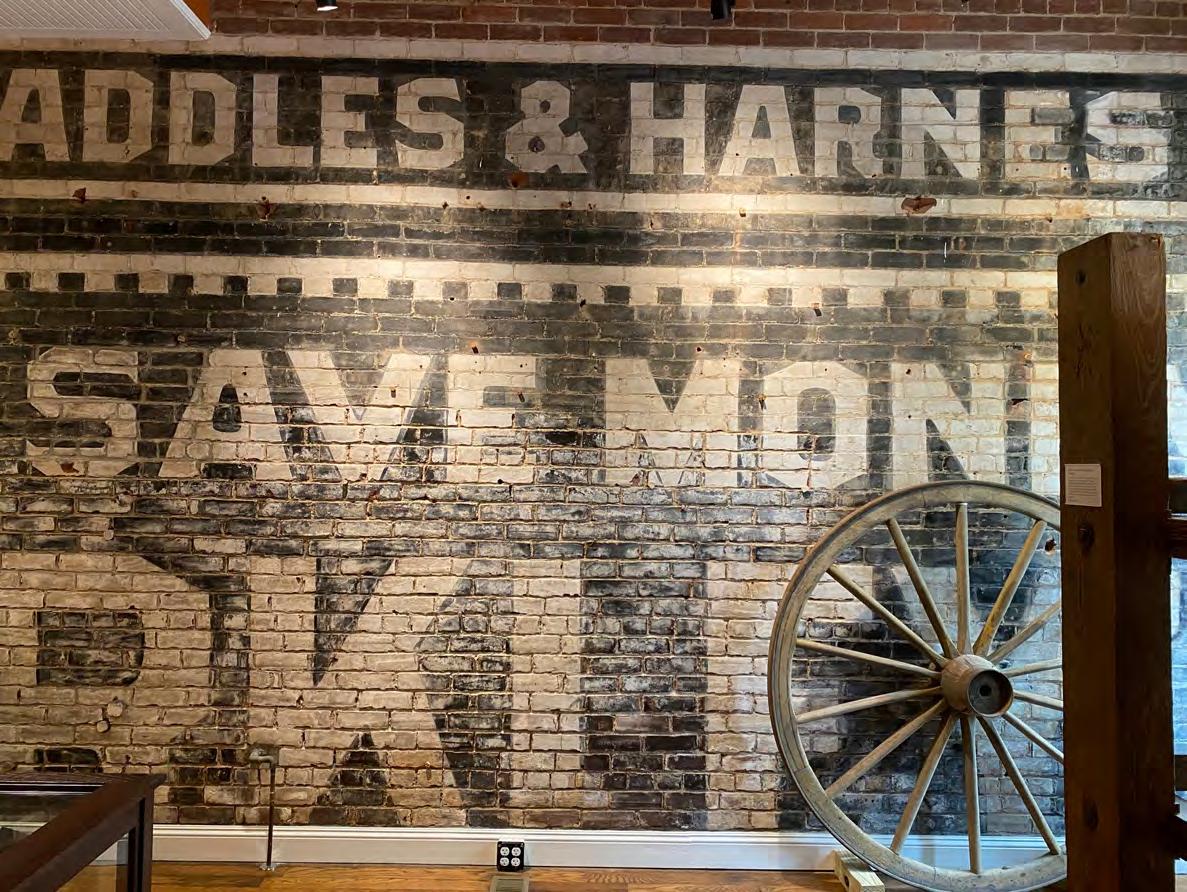
The Bourbon History Galleries at The Old Pogue Experience outlines Maysville's development of bourbon from the late 1700s to mid1800s; the heyday of three prominent distilleries (Pogue, Limestone, Poyntz); the dark days of Prohibition; the postprohibition era; and the renaissance of Old Pogue today.
Disclaimer: Must be 21 years of age with a valid ID to participate in bourbon tastings.
The Kathleen Savage Browning Miniatures Collection has been a 4 decades long labor of love that has taken Kaye Browning around the globe and into the studios of the most talented miniatures artisans in the field. What has resulted is one of the finest collections of fine art miniatures in the world, now on display at the Kentucky Gateway Museum Center in Maysville, Kentucky.
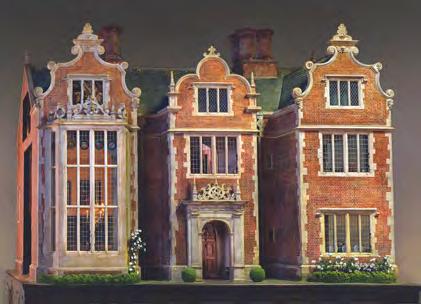
THE FIRST BOURBON-THEMED B&B IN THE U.S. — LOCATED IN DOWNTOWN BARDSTOWN, KY, BOURBON CAPITAL OF THE WORLD.

Get ready for gardening season with this down-home collection of practical advice and personal anecdotes from Kentucky Monthly’s gardening columnist, Walt Reichert. Organized by the seasons, each chapter offers color photography and straightforward tips for everything from combating critters to pairing plants. The Bluegrass State’s green thumbs have proliferated, thanks to Walt’s encouraging and down-to-earth morsels of gardening wisdom.

shopkentuckymonthly.com

888-329-0053
Horticulture meets humor in gardening columnist Walt Reichert’s collection.

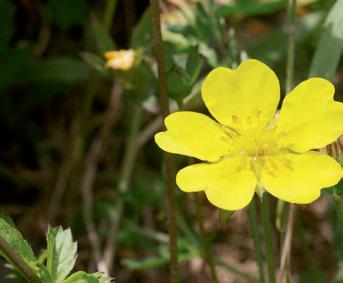
To order: kentuckymonthly.com
1-888-329-0053
Longtime friends from Owensboro (from left) Teresa McKinley, Joe McKinley Jr., Steve Ford and Sarah Ford bravely traversed the Carrick-a-Rede Rope Bridge that connects mainland County Antrim, Northern Ireland, with Carrick Island.

Kentucky Monthly subscribers Bill Pickering of Chattanooga and Jan Pennington of Joshua, Texas, on trip to Kitty Hawk, North Carolina, where they visited the Wright Brothers National Park Memorial.

Dave and Pam Ruda of Lancaster enjoyed two fun-filled days at the Smokin’ on the Beaver contest in Atwood, Kansas. There was plenty of barbecue from more than 50 teams competing for the first-place prize.


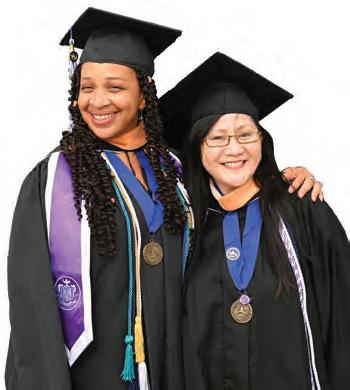
Nine months in the making, chef Ouita Michel’s newest baby was unveiled in a ribbon-cutting ceremony in July. Holly Hill & Co. Cooking Studio in downtown Versailles offers classes that mix cooking demonstrations with Kentucky food culture. Michel and other team members of her Bluegrass restaurant empire will lead the classes.
Michel’s company, Holly Hill & Co., started work on the facility in October 2022. Michel said she got the idea in 2020 during the depths of the COVID-19 pandemic as she saw the need for a new revenue stream for her company while businesses were shuttered. “I also realized so much of what we’re doing, so much of our time, was being spent seeking the attention of outside media outlets like in New York, and I realized that, if we aren’t going to tell our own story, it wouldn’t get told,” she said.
Michel saw an opportunity to use food to bring people together in a time of intense political and cultural divisions. “I felt like food was something that we coalesce around; it’s something we have in common,” she said. “Food brings people together. It always has.”
For more information, go to hollyhillandco.com/cooking-studio

A bronze sculpture of Bluegrass music icon Bill Monroe was unveiled at the Bluegrass Music Hall of Fame & Museum in May. The work of artist Steve Shields, which was commissioned by the Grand Ole Opry, was presented to Monroe onstage at the Opry’s 70th anniversary celebration in 1995. It is on long-term loan to the Owensboro museum.

“If there was a Mount Rushmore of the Grand Ole Opry, Bill Monroe would be one of its most recognizable faces,” said Chris Joslin, Hall of Fame executive director. “It’s only fitting that it lives, for a season, here at the Bluegrass Music Hall of Fame & Museum.”
Starting in September, Kentucky Monthly will celebrate our 25th anniversary with get-togethers across the Commonwealth, flashbacks, personal stories and more. Over the next year, we will meet at various locations for an event or an experience. If you would like to host an event, give us a call.
Let’s explore Kentucky together! Keep an eye out for more details in the September issue.
5 Wendell Berry (1934), Kentucky Writers Hall of Fame poet, essayist, novelist from Henry County
7 Michael Shannon (1974), Tony Award-winning actor from Lexington
7 Silas House (1971), novelist and Kentucky Poet Laureate 2023-2024 from Laurel County,
9 Clark Janell Davis (1997), Miss Kentucky 2015 from Lexington
10 Kenny Perry (1960), professional golfer from Franklin
11 John Conlee (1946), Grand Ole Opry star from Versailles
15 Emmy Buckner (1990), Louisville-born film/ television actress
15 Jennifer Lawrence (1990), Academy Award-winning actress from Louisville
17 Kyra Elzy (1978), University of Kentucky women’s basketball coach
19 Franklin Story Musgrave (1935), physician and retired astronaut from Lexington
21 Jackie DeShannon (1941), Hazel-born singer/songwriter
22 Eli Capilouto (1949), 12th president of the University of Kentucky
22 Mila Mason (1963), country music singer/songwriter from Dawson Springs
23 Lee Roy Reams (1942), Tony Award-nominated actor and singer from Covington
25 Billy Ray Cyrus (1961), singer/actor from Flatwoods
27 Mitch Barnhart (1959), University of Kentucky athletics director
28 Matt Jones (1978), author and host of Kentucky Sports Radio
29 Jamour Chames (1989), Covington-born contemporary artist




Both peas and potatoes have long been favorites in mountain gardens, and for many generations, the latter—thanks to a combination of productivity (you can grow a lot of potatoes in a relatively small space) and keeping qualities—was a staple vegetable, perhaps second only to corn, in overall importance. Fortuitously, peas and potatoes reach the edible stage about the same time in late spring, and combining them in a delicious dish was commonplace. In today’s world, you can buy new potatoes at any time of the year, and frozen English peas make the other part of the classic combo something that can be enjoyed through all seasons.
The “creamed” can be a bit misleading since no cream—just milk— is involved in the dish. Keep in mind that this is a foodstuff, unlike so many, that tends to be lacking in salt. That’s because there’s no salt, other than the small amount present in salted butter, in the ingredients. You can just add salt and pepper to taste if the amount suggested leaves the vegetable mix tasting bland.
12 medium-sized new potatoes
1 cup fresh or frozen garden peas
1 tablespoon salted butter
2 tablespoons diced sweet onion
1 tablespoon all-purpose flour
1 cup whole milk
1 teaspoon salt
Ground black pepper
1. Scrub potatoes with a vegetable brush to remove skin or wash carefully and leave skin intact. Cut in half unless some are quite small. Mixed sizes will be the case with those dug from the garden, while grocery store ones will have relative uniformity. Place in a saucepan in enough boiling water to cover and cook until barely tender (about 10-12 minutes—you can test with the point of a sharp knife), drain in a colander, and set aside.
2. Cook peas in another saucepan of boiling water (required time will be less, perhaps 5 minutes), drain and set aside.
3. Melt butter in a large skillet, add onion, and cook over medium heat until translucent.
4. Add flour, stirring constantly with a whisk, and cook for a minute or so. Then slowly add milk, stirring all the while, until everything is well combined.
5. Add peas, potatoes, salt and black pepper. Reduce heat to a slow simmer and allow to thicken until the sauce is slightly creamy. Taste and adjust salt and pepper, if needed.
6. Pour into a serving dish or bowl and enjoy.
— Jim CasadaNOTE: This makes a hearty main dish for an all-vegetable meal or a grand side dish with fried or roasted chicken.
Many Eastern Kentucky counties fall into the Southern Appalachian region, a mountainous area known for its distinctive culinary culture. With the May release of their cookbook, Celebrating Southern Appalachian Food: Recipes & Stories from Mountain Kitchens , Jim Casada and Tipper Pressley share recipes for traditional dishes along with tips, stories and explanations of some of the dishes’ origins. A handy glossary of Southern Appalachian food terms is as entertaining as it is enlightening. In this issue, we present just a “scrimption” of the “larrupin’ good vittles” found in the cookbook.
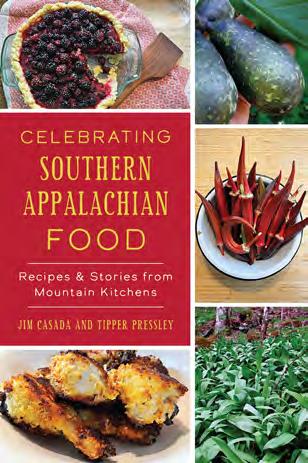

SERVES 4-6
8 chicken pieces
Buttermilk, enough to marinate chicken
2 tablespoons half-and-half
1 egg
1 cup breadcrumbs
1 teaspoon garlic salt
¼ teaspoon pepper
Olive oil
3 tablespoons butter, melted
1. Marinate chicken in buttermilk for several hours. Drain chicken and discard buttermilk.
2. Mix half-and-half with egg and whisk. Mix together dry ingredients and whisk.
3. Dip chicken pieces in the wet mixture and then in the dry one. Place chicken on baking sheet. Drizzle with olive oil and melted butter.
4. Bake at 450 degrees for 15 minutes and then reduce heat to 400 degrees and continue baking for 35 minutes or until done.
— Tipper Pressley

Pork in general, including sausage, has long been an integral part of the Appalachian diet and the region’s most important meat. This versatile stew—which can be varied with substitute ingredients such as turnip or mustard greens for kale, Italian sausage for traditional mountain pork sausage, or about any type of dried bean for cannellini—is wonderfully filling along with being delicious.
SERVES 6-8
1 pound kale
1 tablespoon olive oil
1 pound sausage shaped into small balls or chunks
1 potato, chopped
1-2 cloves garlic, chopped
1 teaspoon red pepper flakes
1 15-ounce can cannellini beans, drained and rinsed
3 cups chicken stock
Salt and pepper to taste
1. Tear kale leaves from the stems, saving the stems. Pile up the leaves and cut into strips with an ulu or knife. Cut the stems into small pieces and set aside.
2. Place oil in a Dutch oven and bring to medium-high heat. Brown the sausage, using a spoon or tongs to turn so it is brown on all sides. Remove the sausage with a slotted spoon and set aside.
3. Add potato and cook for several minutes, stirring a bit, until the pieces begin to brown. Stir in kale stems and cook for 3 or 4 minutes. Stir in garlic, pepper flakes, and kale leaves and cook for 1 additional minute.
4. Return sausage to the pan and add drained beans and chicken stock, along with salt and pepper. Adjust the latter two to taste. (If the stock was store bought, it may already have ample salt.)
5. Reduce heat and simmer about 10 minutes.
— Jim Casada
YIELDS 2 LOAVES
3 eggs
2 cups sugar
1 cup oil
1 tablespoon lemon juice
3 cups all-purpose flour
1 teaspoon baking soda
1 teaspoon baking powder
1 teaspoon cinnamon
2 cups grated zucchini
1 cup nuts
1. Beat together eggs and sugar; add oil and lemon juice.
2. Sift together flour and remaining dry ingredients and add to egg mixture. Mix well.
3. Stir in zucchini and nuts. Bake in two greased loaf pans at 325 degrees for 55-60 minutes or until done.
— Jim CasadaTIP: Pecan halves can be placed on top of the loaves for extra visual appeal.
4 quarts cucumbers (or combination of squash, zucchini and cucumbers)
6 onions, diced
½ hot pepper, diced
1 quart sweet peppers
3 cloves garlic, minced
1/3 cup non-iodized salt
1½ teaspoons turmeric
5 cups sugar
1½ teaspoons celery seed
2 tablespoons mustard seed
3 cups apple cider vinegar
1. Combine vegetables and garlic in large bowl. Mix salt and turmeric and stir into vegetables. Cover bowl and allow to sit for three hours. The smell of the pickles at this stage will starve you to death!
2. After three hours, drain pickles and place in large pot. Combine sugar, celery seed, mustard seed and apple cider vinegar. Pour over cucumber mixture and heat until boiling.
3. While pickles are still hot, pack into sterilized jars, leaving ½-inch head space; add lids and rings. Process in hot water bath for 10 minutes.
 — Tipper Pressley
— Tipper Pressley

SERVES 6
1 cup carrots, grated
1 large apple, diced
1 cup celery, chopped
1 green or red pepper, chopped
Mayonnaise
Salt and pepper to taste
1. Toss the first five ingredients together. Add mayonnaise to taste.
2. Season with salt and pepper to taste.
— Tipper Pressley
SERVES 6-8
6 cups blackberries
1 cup sugar
½ cup water
¼ cup cornstarch
2 tablespoons fresh lemon juice
2 tablespoons butter

1 baked pie shell
1. Cook 2 cups of blackberries with sugar, water, cornstarch, lemon juice and butter. Bring to a simmer and cook for 1 minute, until mixture has thickened.
2. Place 2 cups of blackberries on the bottom of the pie shell. Pour cooked mixture over them and add the remaining 2 cups of blackberries to the top.
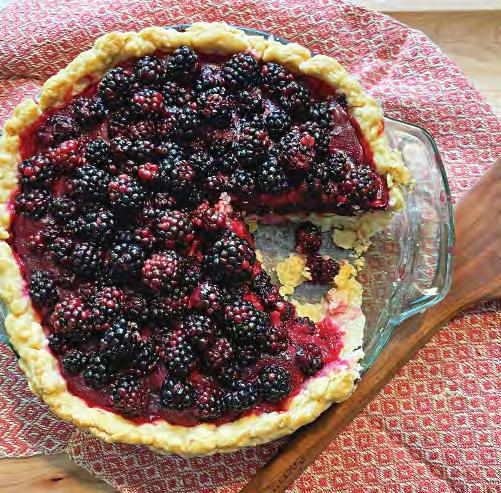
TIP: Salad may be altered by increasing or decreasing ingredients according to individual preference.
3. Chill for 4 hours before serving. Makes a pretty summertime pie.
— Tipper PressleyCelebrating Southern Appalachian Food: Recipes & Stories from Mountain Kitchens by Jim Casada and Tipper Pressley is available in bookstores across the country and online at arcadiapublishing.com.
“In 2020, learning I had cancer was a shock. As I made the decision about where to receive treatment, I was led to the outstanding treatment facility that was here at home — the Lawson Cancer Center at PMC.




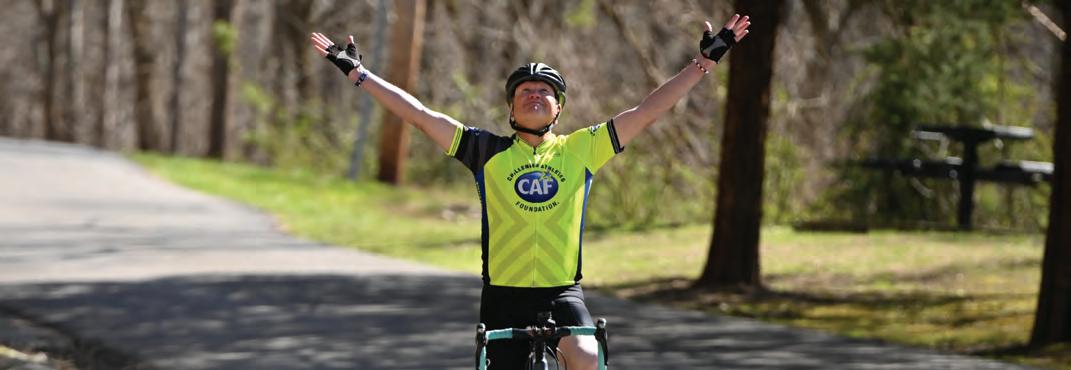
I’m so thankful that I did my treatment here. The quality of care I received was second to none. The doctors, the nurses, the support staff — everyone involved — became family. I don’t feel like I could have gotten the same treatment in a larger city or institution.”



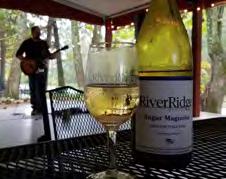
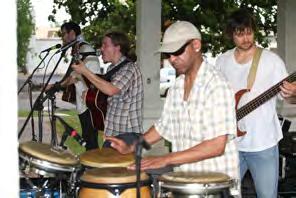




Use your phone to scan the qr codes throughout the story to find maps, information and more!
Kentucky is blessed with an abundance of spectacular waterfalls
There is something magical about a waterfall hike in the rain. On my summer visit to Princess Falls in McCreary County, the sound of water was everywhere: the river rushing over rapids below, the rain steadily thrumming the canopy overhead, gravity pulling small creeks downhill across boulders. It was like being immersed in a stream, a part of the watery landscape.
The creek cascaded and murmured beside the trail I walked up to my destination. Within moments, I began to hear the quiet roar of the waterfall. My trail buddy and I descended to the pool to explore the acoustics of the nearby rock shelter and navigate across the creek while attempting, unsuccessfully, to keep our feet dry. Finally, we lay a cloth on the rock slab bench, poised with a perfect view of the falls, sat down, and drank in the scenery and sounds.
Kentucky, the 37th-largest state, has more miles of running water than any other state except Alaska. While the Commonwealth’s liquid wealth has long harbored a thriving lake culture, our waterfalls, as a whole, have been less celebrated.
That is changing. A behind-the-scenes waterfall community seeks out new cataracts and celebrates those that are already known. An online waterfall database, kywaterfalls.com/dir/, lists more than 1,175 confirmed sites in the state, and the list grows every year.
Database organizer and photographer Bill Fultz first fell in love with waterfalls 20 years ago. He recommends Kentucky as a great state for waterfall enthusiasts, especially the southern and eastern parts, which hold more than 800 of them.
“You can visit the same falls over and over again, and they are never the same,” Fultz said.
The Kentucky Wildlands (explorekywildlands.com), a regional tourism initiative, has created a Waterfall Trail stretching from Clinton County on the Tennessee border to Carter County in the northeast. Based in Somerset, The Kentucky Wildlands showcases the beauty and heritage of 41 counties in the southern and eastern parts of the Commonwealth. The 17 falls on the Trail inspired the following suggested itineraries of waterfall explorations.
v Waterfall seekers should do research to understand each waterfall trail’s level of difficulty, guidelines and the trail conditions during the time they plan to visit.
v A number of these waterfalls are rain dependent. Check recent precipitation totals before setting out for ultimate viewing.
v Each season has different benefits for the waterfall explorer. Consider going in the winter, when falls can freeze and crystallize, or in early springtime to enjoy a full water flow and ephemeral wildflowers.
v Be respectful of guidelines set by the destinations’ landowners. For example, State Nature Preserves (Anglin Falls, Cumberland Falls and Bad Branch Falls) permit foot traffic on established trails only, do not allow pets, and prohibit visitors from collecting any plants, rocks or artifacts.
v Explorers can visit more than one of these stunning sites on a single trip to a particular area. The following trips group these waterfalls by proximity.

bbb
CUMBERLAND
Cumberland Falls State Resort Park
This is the most iconic falls in Kentucky and for good reason: More than 3,500 cubic feet of water flow over this precipice every second. Known as the Niagara of the South, it is the widest cascade in the state at 125 feet. Thanks to the Kentucky State Parks system, it is also one of the most accessible, with wide paved trails leading to top, side and bottom views. A big draw here is the moonbow, which lucky visitors can view in the mist on clear, full-moon nights. This phenomenon occurs consistently in only two places in the world, the other location being Victoria Falls on the Zambia-Zimbabwe border.
McCreary and Whitley counties

Total drive time among the falls: 25 minutes
bbb
EAGLE
Cumberland Falls State Resort Park
This is a must-do trail for hikers who can handle a moderate, 3-mile round-trip trek. The first section hugs a cliff that hovers above Cumberland Falls. Hikers can feel its powerful surge, hear the thundering roar, feel the wind-blown spray, and may experience a touch of vertigo while peering down at the quickly moving river. Passing beside calmer water, the trail has ups and downs, including a series of stairs down to near-water level. Boulder hopping on the rocky shore leads to a small opening, where the picturesque 44-foot Eagle Falls enters a pool on its downhill voyage to the river.
bbb
Daniel Boone National Forest
Lovely Dog Slaughter Falls has at least three access points: off the Sheltowee Trace National Recreation Trail from Cumberland Falls State Resort Park and from two trailheads on Forest Service Road 195. The shortest hike is about 2.5 miles round trip. The trail follows Dog Slaughter Creek, lined with rhododendrons and boulders, until it enters a natural cove with the 15-foot falls pouring into a scenic pool.
This excursion includes the most powerful falls in the state and is recommended because all three falls flow year-round, regardless of rainfall.
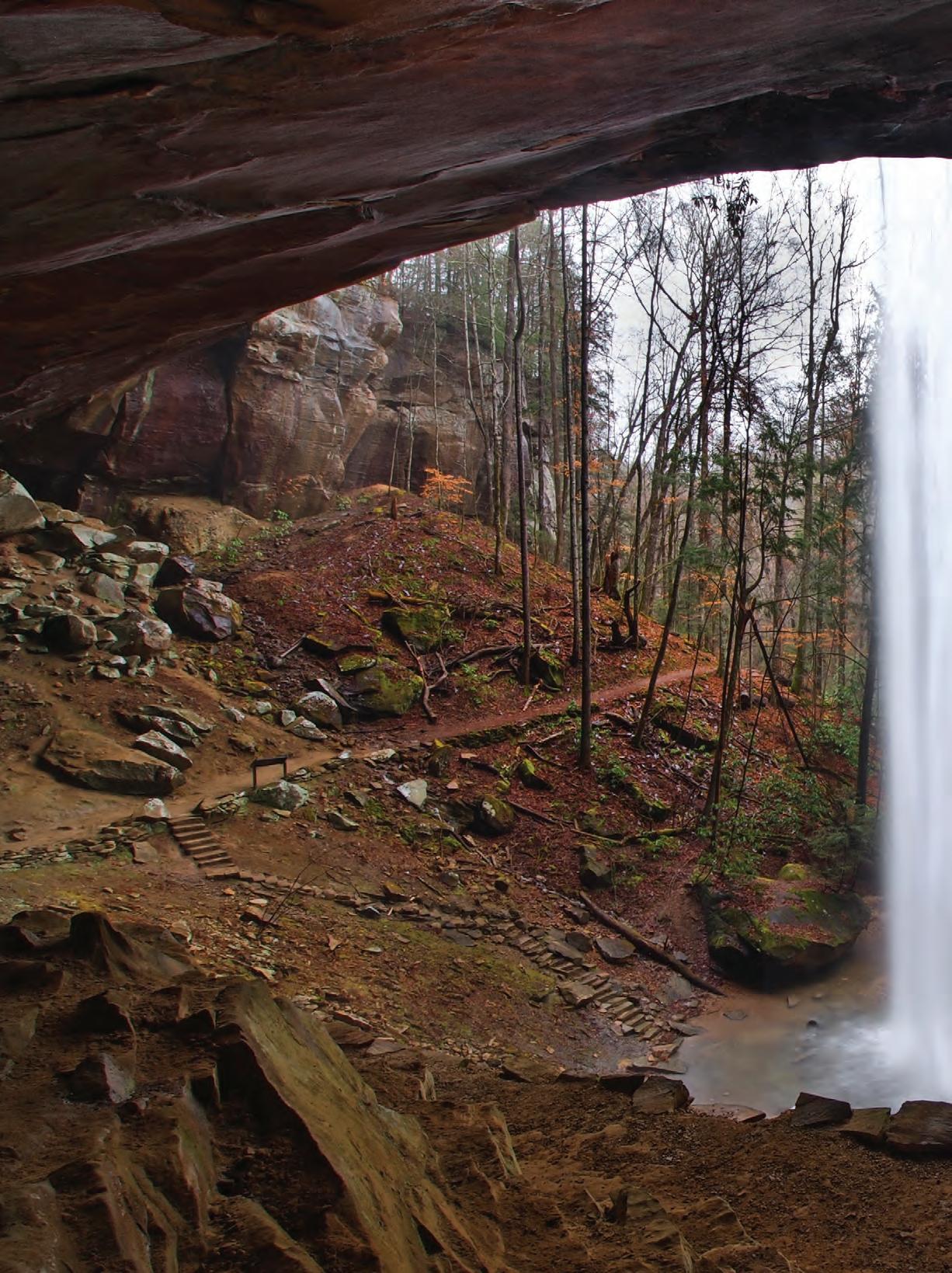
location
McCreary and Laurel counties
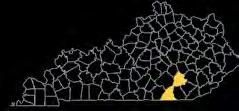
Total drive time between the falls: 1.5 hours
This trip takes visitors to the waterfall epicenter of Kentucky—McCreary and Laurel counties. Together, they hold 400 confirmed falls. The next closest county in number of falls—Rockcastle—has 56.
bbb
YAHOO FALLS
Big South Fork National River and Recreation Area

At 113 feet, Yahoo Falls is one of the tallest in the state. A 1-mile loop trail, which climbs and descends numerous stairs, accesses a network of paths that reach the base of the falls and overlooks at the top. It also passes through a rock shelter behind the water—impressive on its own and for its viewpoint of the falls.
bbb
PRINCESS FALLS
Daniel Boone National Forest
Hikers reach this cascade on Lick Creek Trail #631 and can access it from both ends of the route. The longer is a 3.3-mile one-way hike from the Lick Creek Trailhead. The shorter is a 1.25-mile one-way hike on the Sheltowee Trace, Section 33, starting at Yamacraw Bridge. The trail is relatively easy, and, as a bonus, Lick Creek Falls—not on the official Kentucky Wildlands Waterfall Trail—is 1.5 miles farther from the bridge on Lick Creek Falls Trail.
bbb
VANHOOK FALLS
Daniel Boone National Forest
While the final destination of this nearly 5-mile round-trip hike is the Vanhook Falls, hikers shouldn’t rush and miss the scenery along the way. It passes by a slot canyon, interesting rock formations and at least five other falls. With a drop of around 40 feet, Vanhook Falls plummets into a sandstone cathedral. Sheltowee Trace, Section 26, is considered to be one of the most scenic hikes in the state.

location Wolfe County

Total drive time between the falls: 25 minutes
Rock Bridge Trail is a moderate 1.25mile loop through a hemlock ravine that is great for family hikes. The bridge is the only arch in the Gorge to cross a body of water. The trail winds along the creek, including the pretty cascade of Creation Falls farther upstream. Visitors should keep in mind this trail is in the Clifty Wilderness, and group size is restricted to 10 people.
This longer but mostly level route traveling 5.25 miles out and back begins on the Sheltowee Trace from the Whittleton Campground in Natural Bridge State Resort Park. After a good rain, a stream rushes over Whittleton Arch. Explorers also can go under the arch for a view from behind the falls.


Clinton and Wayne counties
Total drive time between the falls: 35 minutes
SEVENTY SIX FALLS
location
Rockcastle and Jackson counties


Total drive time between the falls: 45 minutes
Clinton County
This small recreation area, which is maintained by the United States Army Corps of Engineers, is a popular spot for kayaking, swimming and picnicking. A short wheelchairaccessible trail leads to the top of the falls, where Indian Creek tumbles 38 feet into Lake Cumberland. Seventy Six also is a popular destination for boaters on the lake.
ANGLIN
John B. Stephenson Memorial Forest
This lovely State Nature Preserve, owned by Berea College, has a 1.7mile round-trip trail to 75-foot Anglin Falls. The hike passes through a peaceful forested gorge and is considered moderate because of some rocky, uneven terrain.

Flat Lick Falls Recreational and Scenic Area
This 28-foot falls tumbles into a large pool that is perfect for swimming on a hot summer day. The parking lot is close to the top of the waterfall and a short paved path leads to a wheelchair-accessible viewing platform. A half-mile hiking trail winds through a section of the forest and up the creek to the base of the falls. The park also offers camping, a picnic shelter and 4 miles of additional trails. Please note that jumping off the top of the falls is labeled as very dangerous and possibly fatal.
MILL
Built in 1877, the historic mill and its 40-foot wheel were constructed at this site because of the abundance of flowing water. Thirteen distinct natural springs merge and cascade across the hillside before meeting up to form two 30-foot falls. A paved trail in the park, also maintained by the U.S. Army Corps of Engineers, leads to the mill and beyond to the falls, though it can be steep and uneven. Boaters on Lake Cumberland can get a good view of the two streams.
BAD BRANCH FALLS
bBAD BRANCH STATE NATURE PRESERVE
This waterfall is off the beaten path but worth the trip. The preserve is commonly known as one of the most beautiful natural areas in Kentucky. The falls is a 60-foot tumbler in the interior of a forested gorge on Pine Mountain. A relatively easy 1-mile, one-way hike leads to the site, with a more strenuous 4.1-mile lollipop trail leading beyond.
For more of Bill Fultz’s magical images of Kentucky waterfalls , visit www.fultzfotos.com.

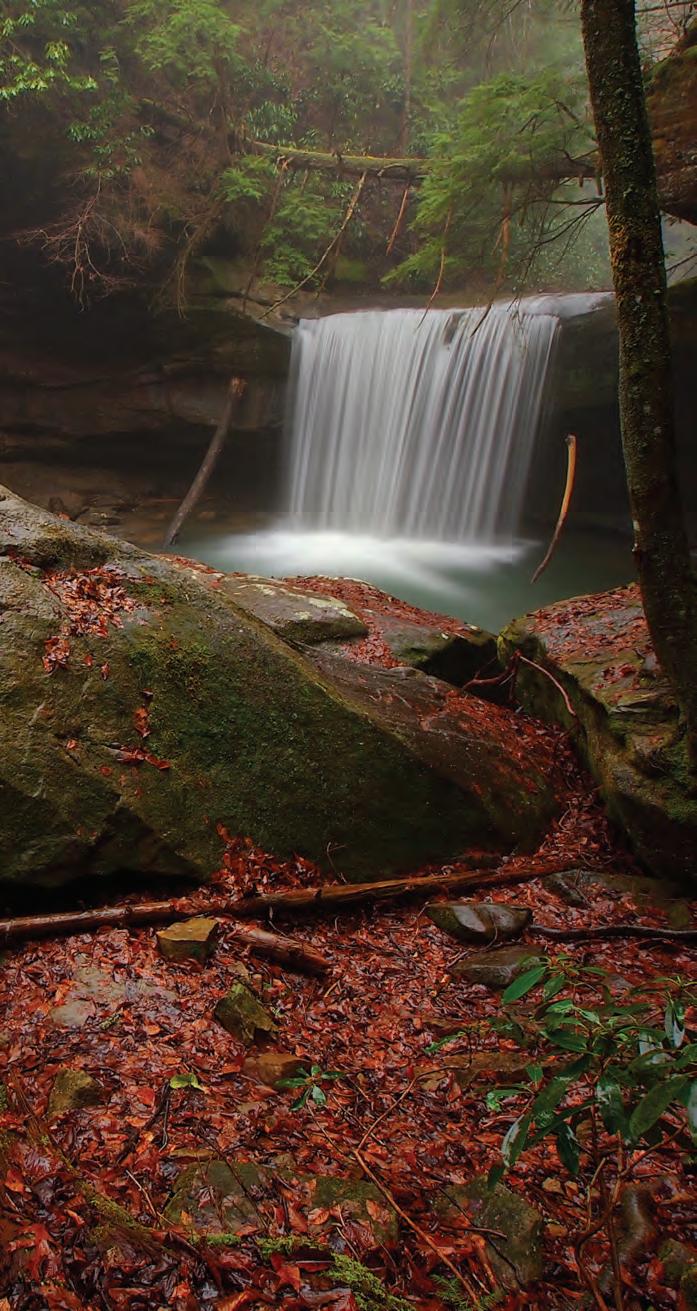

didn’t look back when she left her Kentucky hometown, but many of her contemporaries have fond memories of their student and classmate
BY JACK BRAMMERThe faded 1973 yearbook of the Nicholas County High School Blue Jackets in the Carlisle public library contains a black-and-white photo of a pretty, long-haired teenager with a faraway gaze lounging on a chair and sipping a soft drink.
Look at the photo long enough, and you wonder what was on the young girl’s mind.
It is a curious though serene pose of Barbara Kingsolver, who in May was awarded a Pulitzer Prize for fiction for her hilarious and heart-warming 2022 novel Demon Copperhead. She has written nine novels and several books of poetry, essays and nonfiction. An international author whose works have been translated in 20 languages, Kingsolver published her first book, The Bean Trees, in 1988.
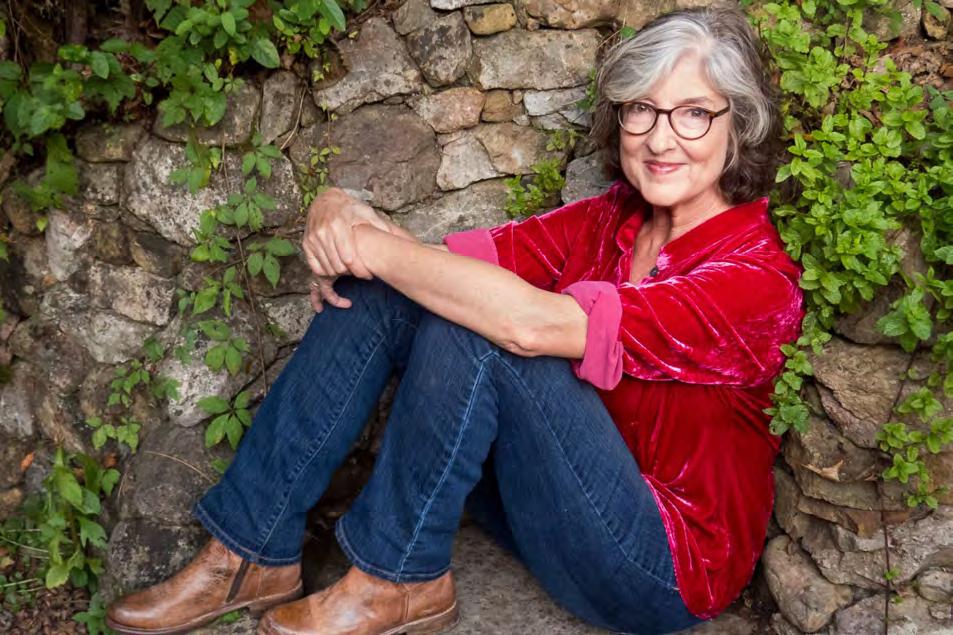
She has become one of the world’s most acclaimed writers.
The high school photo showed a private side of Kingsolver, said Peggy Whalen, an administrative assistant at the school today who was a year ahead of Kingsolver in school.
“I remember she was usually seen either reading or writing. She was a very intelligent young lady and is greatly admired around here for what she has done with her life,” Whalen said. “You could tell in high school she was not going to stay around here very long.”
With a population of 2,443, Carlisle is the county seat of Nicholas County. Founded in 1816, the town is about halfway between Lexington and Maysville on the foothills of the Appalachian Mountains.
Carlisle’s downtown has a magnificent old courthouse, along
with a new judicial center and various businesses and shops in Victorian-era buildings.
Nicholas County, with about 7,532 residents, has a picturesque, rural character, with a rolling countryside and winding roads that lead past farms, wooded glades and small communities. Before Kingsolver, its most notable residents were pioneer Daniel Boone and the late political activist Gatewood Galbraith
Many of its residents cringe when Nicholas County is placed in Appalachia. “We’re not Appalachia. We don’t mine coal here,” said Jerry Johnson with the local tourism board and history museum. Nicholas County, however, is one of 54 Kentucky counties in the Appalachian Regional Commission, an economic development partnership entity of the federal government and 13 state governments focusing on 423 counties.
Kingsolver calls herself “an Appalachian writer,” but that has more to do with her living on a farm in southwest Virginia near Abingdon than growing up in Carlisle. She has lived there (70 miles from the Kentucky state line) since 2004 with her husband, Steven Hopp, an author and sciences educator.
In a recent interview, Kingsolver talked about growing up in Carlisle and its impact on her life.
“I love Carlisle,” she said. “I love it in the way that you love the place that made you who you are. I’ve always had a very complicated relationship with Carlisle, but I think that all of us who have lived in a really small town know that the bad thing about small-town life is that everybody knows your business, and the beautiful thing about small-town life is that everybody knows your business.
“I probably had to grow up and leave there in order to appreciate the second half of that equation.”

Spend some time in Carlisle and you will see little indication that such a famous writer as Kingsolver grew up there. There is no historical marker of the town’s famous daughter.
Mary McCord, manager of Carlisle Gifts & Collectibles on Main Street, has several of Kingsolver’s books in a display at her store. McCord sold all 12 of her
first order of Kingsolver’s latest book. “She’s been gone awhile, and some people say she doesn’t come back enough. But she still is highly thought of here by many, and people are very interested about her,” McCord said.
Barbara Kingsolver was born April 8, 1955, in Annapolis, Maryland, to Wendell R. Kingsolver, a doctor who was on duty in the United States Navy at the time, and his wife, Virginia Henry Kingsolver. Virginia, known as Ginny, was a homemaker who worked with her husband to start his family medical practice and served in volunteer groups such as the Girl Scouts, the Nicholas County Hospital (for 20 years), and the Nicholas County Development Corporation at Lake Carnico, of which she was president for a decade. The Kingsolvers frequented the 114-acre, Y-shaped Lake Carnico.
Wendell and Ginny were sweethearts for 70 years and were among the founding members of the First Christian Church (Disciples of Christ) in Carlisle.
Ginny was choir director and the first female elder in the church.
Wendell now lives in Nicholasville. Ginny died on July 1, 2013, at 83 and is buried in her native Lexington.
The Kingsolvers had two children in addition to Barbara. Dr. Robert W. Kingsolver has had a successful career as a biology professor at Bellarmine University in Louisville, and Dr. Ann E. Kingsolver is a prominent anthropology professor at the University of Kentucky.
In Carlisle, the Kingsolver family lived in a modest brick ranch house on Shepherd Hill off Scrubgrass Road near the old hospital. It had a basement office for Dr. Kingsolver and an indoor swimming pool that generated much talk in the community.
The Kingsolvers steered their children away from watching TV to reading books. Their heavily wooded backyard became an institution of higher learning about nature. Ginny was an avid birdwatcher and shared her passion with her children.
When Barbara was headed into the second grade, the family spent a year in the Congo. Barbara wrote a bestselling book, The Poisonwood Bible, in 1998 about the stories of the wife and four daughters of an evangelical Baptist who moves them to the Belgian Congo in 1959.
Kingsolver said she never writes about real people
but often about places and situations with which she is familiar. She adamantly said her novels are not autobiographical but often contain common features or attributes of her life and her work.
The Kingsolver family was “wonderful,” said Wanda Wagner, who started working for Dr. Kingsolver in 1962 and was employed by him for 28 years.

“The children … I remembered they would come to the office and were so polite,” Wagner said. “Barbara was a sweet little girl. No sass from her.”
Lisa Reynolds, who was a year behind Barbara in school, said Kingsolver was “so smart. By the time she was finished with high school, she was ready to leave Carlisle.”

The 1973 yearbook listed Kingsolver in the Speech Club, French Club, Drama Club, Honor Society and as a band member who played bass clarinet. It irritated Kingsolver that girls had to take home economics while boys took shop.
Kingsolver said she was “a wallflower, not popular, introverted” in school. “Always reading, writing and studying,” she said.
Her teachers thought she was wonderful.
“The whole school knew her because she was so
smart and was Dr. Wendell’s daughter,” said Martha Sue Taylor, a teacher at Nicholas County High School who retired in 1998.
Catherine “Kitty” Sagraves, now of Cynthiana, was an English teacher who taught Barbara in high school. Sagraves retired in 1999.
“She was exceptional, highly motivated. Everything she tackled, she gave her best,” said Sagraves, who recalled Barbara’s “great” role as a French character in the school play, Our Hearts Were Young and Gay. The play was based on a 1942 book about two women fresh out of college taking a tour of Europe in the 1920s.
“It was Barbara who went out into the world from Carlisle, and the world is better for that,” Sagraves said.
Barbara was a co-valedictorian of the 1973 graduating class of 80 students from Nicholas County High School.
The other “co-” was Tommy Darrell, known today as Dr. Thomas C. Darrell, a family medicine specialist in Fuquay-Varina, North Carolina.
“We were good friends in all 12 grades together,” Darrell said. “If she didn’t read every book in the school library, she came close.
“I hear from her occasionally. I miss a lot of leisure reading, so I would like to catch up on her work. I know I will always have fond memories of her.”
Earl Pfanstiel, a retired Carlisle educator, knew the entire Kingsolver family.
“I went to church with them,” he said. “Wendell loved to sing at First Christian Church, and Ginny was a fine singer. The kids were kids, and I think Barbara liked to consider herself the social misfit.
“But she wasn’t. She got good roots in Carlisle but had to—just had to— flap her wings and fly out of here as fast as she could. Some people here still resent that. She wasn’t one of those country girls who thought they had to find a good man and raise a family here. Barbara had other things on her mind.”
After graduating from Nicholas County High School, Barbara attended DePauw University in Greencastle, Indiana, where she graduated with a degree in biology.

Barbara wanted to be a writer She lived in Europe for a time, working for publications and in health care. She later entered the University of Arizona, where she earned a master’s degree in biology. She then worked as a science writer for the university. She began thinking about becoming a fiction writer in 1982 after winning a contest in a Phoenix newspaper. She was a full-time freelance journalist by 1985, and then wrote her first novel.
Also in 1985, Kingsolver married Joe Hoffman, a chemistry professor at the University of Arizona. They had a daughter, Camille. With second husband Hopp, she had a daughter, Lily

Kingsolver rarely visits Carlisle. “There’s really no reason,” she said. “No close kin. No reason to go back.”

She did not know if she would attend this year’s 50th reunion of the 1973 Blue Jackets class. “I don’t know much about it,” she admitted.
Maybe, in the faraway gaze she had in the high school yearbook photo, she pictured places at a great distance from that small setting on the map of Kentucky called Carlisle, where her roots remain strong, though mostly out of sight. Q
Several Kentucky colleges and universities offer programs that prepare students for careers in one of the Commonwealth’s signature industries
BY DEBORAH KOHL KREMERKentucky’s connection to horses goes back hundreds of years, as Native Americans—many likely on horseback—used the land that now is the Commonwealth as hunting grounds, and then pioneers came through the Cumberland Gap into Kentucky.
While people used the strong four-legged beauties for transportation and agriculture, some also raced their horses, whether for bragging rights or a friendly wager. It has long been believed that Kentucky’s limestone-filtered water and lush pastures were responsible for the development of fine racehorses. Historical accounts of horse racing in the streets of Lexington as early as the 1780s tied the sport to the Bluegrass State.
The University of Kentucky found that the Commonwealth today is home to about 450 horse farms, and more than 100,000 residents have jobs related to the horse industry. The half-million horses that live here create a $3 billion economic impact. Several Kentucky colleges and universities offer programs that teach all things equine, preparing students for positions in horse health care, racing, farming and business aspects of the industry.
Asbury University, a private liberal arts college in Wilmore, offers majors in equine studies, equine assisted services, and a pre-veterinary program in equine science. The equine program has been around since the late 1970s, but, according to founding director Harold Rainwater, the course of study, facilities and even students have changed quite a bit over the years. Originally, the program was known as equestrian studies, and students went to nearby farms and horserelated events to learn about horses. Then, Asbury acquired three retired racehorses, which Rainwater kept at his farm. In 1997, the university acquired 343 acres about a mile from campus, and that is when the program really took off.
“We have both indoor and outdoor training facilities, 72 stalls, 6 miles of trails and 80 horses,” he said. “And we have more than 100 students in this major.”
Students choose Asbury’s equine program for an assortment of reasons and career goals, but one of the biggest hooks, said Rainwater, isn’t listed in the course catalog. “You can bring your horse to school,” he explained. “So many of these students don’t want to leave their horse at home while they go to college, and they can board them at Asbury.”
Asbury is known nationally for training police mounts and has placed horses with police departments all over the country.
“It takes about four years to prepare a horse for this, so every freshman in the program is assigned a baby horse to train,” he said. “And by the time they graduate, the horse is also ready for its career, and it graduates, too.”

With a one-semester certificate or a two-year associate’s degree in applied science in equine studies, Bluegrass Community and Technical College (BCTC) prepares students for careers in the horse barn and on the track. After completing two foundational courses—one in equine care and one in training principles—students can tailor their program to match career goals.
Dixie Kendall, equine studies program coordinator, has been with BCTC for 12 years. Her primary focus is racehorse riding, but along the way, she has taught everything from physiology to equine bloodstock.
She explained that every student, no matter what their career goals are, must take the foundational lab classes at The Thoroughbred Center in Lexington.
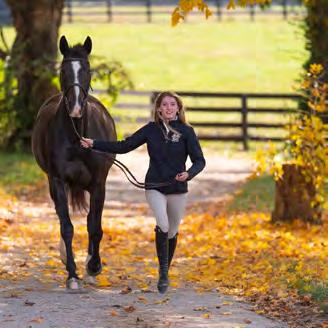
“[The students] are going to spend three to four hours a day, four days a week, hands on in the barn,” she said. “They will learn all the basic skills needed to walk into a barn and be employable at entry level.”
Internships are not a requirement, but the lab classes are necessary for students to be eligible for one.
“This is a very popular part of our program,” Kendall explained. “We have an almost 100 percent employment rate out of our internships.”
BCTC is selective regarding the farms and companies with which it collaborates for internships. Students and graduates can be found all over central Kentucky at employers such as WinStar Farm, Spy Coast Farm, Godolphin and Rood & Riddle Equine Hospital.
Kendall said BCTC is not competing with Kentucky’s universities but acts as more of a steppingstone for someone who might want to transfer credits and work toward a four-year degree.
A Kentucky resident can complete the two-year program for around $11,000. Many of the equine courses are online, so students can work while getting their degree. Out-of-state students can take the online classes for in-state rates. Currently, the program has about 60 students, and the mix is half out-of-state and half Kentucky residents.
Kendall said the school is best-known for its racehorse riding program, which is highly selective, accepting only six students per year. She explained that a large number of graduates are licensed exercise riders and jockeys, but many more are in non-riding careers.

“Our program is not just about riding or even just about racing,” she said. “A student can come here and be prepared for almost any career path in the equine industry.”
Midway University in central Kentucky offers equine science, equine management and equine rehabilitation majors. The school also has a master’s in business administration degree with a concentration in equine management. Midway has offered horse-related courses for 50 years.
The university’s 160-acre farm is part of the main campus, just a few minutes’ walk from the dorms. It has indoor and outdoor riding arenas, dozens of stalls, and one barn even has an equine classroom. The proximity enables students to be close to the horses yet still on campus.
The program is ever evolving, said Ellen Gregory, Midway’s vice president of marketing and communications. An online equine business and sales program launched in 2022. Gregory explained that the main program is hands on, but the equine business and sales program enables Midway to take equine education to a larger audience since it does not require direct hands-on horse care.
Currently, 150 undergraduate students and 35 MBA students are pursuing degrees in the equine program. Gregory said Midway students are highly sought after for internships and go on to careers in rehabilitation and farm management. Others continue to graduate or veterinary school.
The equine program at Morehead State University is located at the Derrickson Agricultural Complex, a 350-acre farm about 10 miles from campus. Students who plan to go on to veterinary school can follow the prevet track that includes radiology, surgery, endoscopy and reproduction technology, all taught at the farm.
Students pursuing the bachelor of science in agriculture with equine science track usually find careers at horse farms, in equine pharmaceuticals or with breed associations. Morehead’s equine program has about 40 students, which enables more hands-on experience and a low student-teacher ratio.
The farm has about 40 horses, a 2,000-seat indoor arena, an outdoor arena and several barns with stalls. The equine program began breeding Quarter Horses about five years ago. Katie Kaufman, Ph.D., an assistant professor of equine science, explained that this breed of horse is multidisciplinary and excellent for lessons.
By breeding the Quarter Horses on the farm, Morehead ensures the equine program continues to have young stock as horses age out. A bonus is that students can participate in the entire breeding cycle.
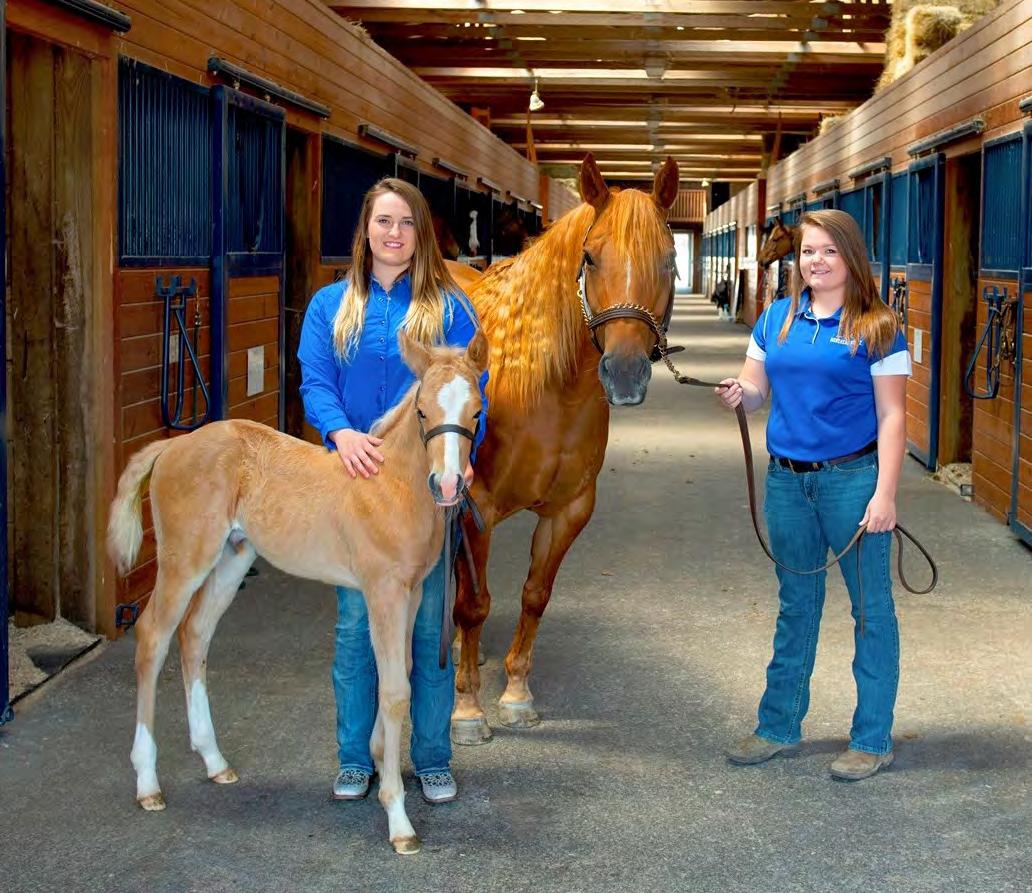
“They learn about handling the stallions, breeding, foaling the mares, training of the foals, and even the aspect of preparing for their sale,” Kaufman said.
Morehead students typically live in campus dorms or apartments around town. But agriculture science majors can apply to live on the farm, which accommodates 48 residents. The sought-after farm lodgings are six-person apartments, each with three bedrooms, three baths, and communal living, kitchen and laundry areas. About half of those students can choose to work on the farm 10 hours per week and pay half price for their lodging.
“A lot of our students come from a family farm,” Kaufman said. “By living here, it gives them the familiar feeling of home.”
1.800.272.4678
In far western Kentucky, Murray State University offers a bachelor of science in agriculture degree in animal/ equine science. Less than a mile from the main campus is a working farm that is home to the university’s 45 horses.
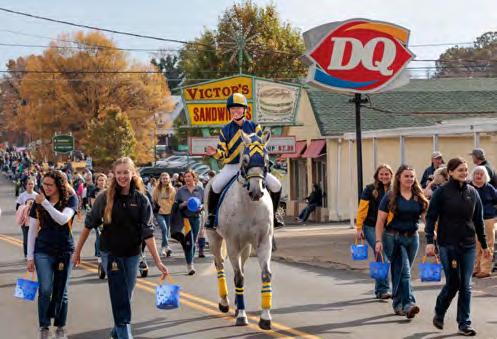
Murray has an indoor arena, a dressage ring, a turnout lot and a rodeo arena. The farm has 100 horse stalls, and students are allowed to board their horses on campus even if they are not majoring in equine science.
Shea Porr, Ph.D., the associate dean of Murray’s Hutson School of Agriculture and department chair of animal/ equine science, has been with the university for 10 years. She said the program has about 75 students.
“Students can do, not just watch,” she said. “We work hard to give students experience and hands-on opportunities.”
Students can pick a focus based on their interests and career goals. With a degree concentration in equine business management, graduates can run a farm or a horse-related business. A degree in animal agriculture provides students the base for careers in nutrition, pharmaceuticals and reproductive health.
Murray’s newest and fastest-growing focus is a prechiropractic degree, similar to pre-med.
“This major is for the student who doesn’t want to do pre-vet but wants to work in animal healthcare,” Porr said.
After graduation, students can continue their studies at another institution and obtain a doctor of chiropractic degree that allows them to treat both animals and people. Porr said one alum visits racetracks and treats both horses and jockeys.
Murray has an equestrian team and a rodeo team, and both compete nationally.
Another way for students to get involved in an equine activity is with the school mascot—not a student in a wacky cartoonish costume but an actual horse that was born and bred on the Murray farm. Known as Racer 1, the mighty Quarter Horse runs a lap of the stadium when the Murray State Racers football team scores a touchdown at home games. The jockey is a student, but the program requires a team of students to take care of the horse, help out at public appearances, and handle public relations and marketing.
A version of Racer 1 has been running the celebratory loop since 1976. The current Racer 1, a beautiful gray that also goes by the name Vegas, appeared at 37 events last year.

The University of Kentucky’s Ag Equine Programs, which began in 2005, is in the Martin-Gatton College of Agriculture, Food and Environment. The school owns about 400 horses that can be found grazing on the university’s thousands of acres of farmland spread over three farms—two in Lexington near the Kentucky Horse Park and one in Woodford County.
About 325 students are enrolled in the UK Ag Equine Programs, which has three tracks: equine science, equine management and industry, and communications and leadership.


The university also is home to the Maxwell H. Gluck Equine Research Center. A separate entity from the equine program, it is the only facility in the United States conducting clinical research full time on equine diseases and health.
“As a land-grant university with a core mission of research, teaching and extension, we share our findings for the betterment of horses,” said James MacLeod, DVM, director of UK Ag Equine Programs.
The equine program is well known nationally, and nearly 80 percent of students come from out of state, which is the highest percentage of any major in the university.
MacLeod explained that, compared to other states, Kentucky offers not just education but many horse-related career paths. Although all tracks of the program include mandatory horse labs—which study horse husbandry, nutrition and anatomy—only one-third of graduates go on to work directly with horses.
MacLeod said most graduates find employment in equine tourism, equine shipping, and equine law or positions that require knowledge of the horse but may not exactly be considered the horse industry.
“They can work for an architecture firm that designs barns or study soil science for horse pastures … A huge growth area is data and computer science,” he said. “It’s all here in Kentucky.”

Louisville
business.louisville.edu/ academics-programs/equine/ 502.852.7439
The University of Louisville’s Equine Industry Program is a track within the College of Business that leads to a bachelor of science degree in business administration. Amy Lawyer, Ph.D., department chair of equine administration, said it is the only business school with an equine program in the U.S. Students pursuing this degree follow the core business classes and add 27 hours of equine-related and event management classes.
“We give students skills for a career in the horse industry,” Lawyer said. “We don’t focus on care and training but on business acumens like marketing and customer service for a long-term career.”
This combination prepares students for business positions in the horse industry such as management, insurance, breeding and simulcasting.
“Our program is small, but that is intentional,” Lawyer said. “The College of Business has higher acceptance requirements than others, so not all students who apply get in.”
This selective process, paired with the university’s close proximity to Churchill Downs racecourse, results in students having access to industry professionals and the opportunity for internships on both the front and backside of the track.


B.S.
• Management
• Rehabilitation
• Science
B.S.
EQUINE MBA
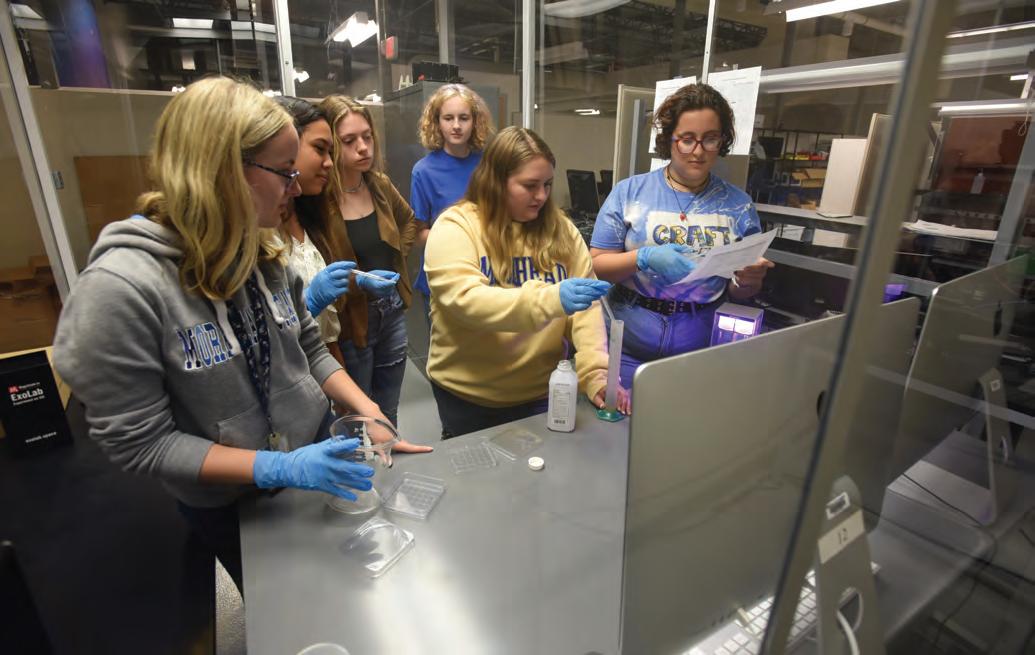

• 100% Online
•
•
After spending years in the ministry, Owensboro’s Jon Brennan has returned to his passion of singing country music
BY MICHELE WOJCIECHOWSKIOn a hot summer evening in a Nashville venue, Jon Brennan walks onstage. He faces the audience, tunes his guitar, and fixes the microphone to the perfect height.
After adjusting his cowboy hat, Brennan puts his fingers into position on the guitar strings and glances back just long enough to make eye contact with his drummer, letting him know that he’s ready to go.


The count-off begins: 1, 2, 3, 4 …
As Brennan and his band play, the music surrounds the crowd.
Finally, Brennan steps up to the mic and does what he does best: He sings.
COMEBACK KID: Following a nearly 20-year hiatus, Brennan returned to his passion of making country music.
For as long as he can remember, Owensboro resident Brennan, 49, has been singing. His love for country music came from his late father, Dan
“He was always into Willie Nelson, Waylon Jennings, Johnny Cash and George Jones,” Brennan recalled. “When I was old enough to drive around in the car with Dad, he would always have country music playing. That’s when I started to sing along.”
Brennan’s favorite band was Alabama, and he would blast the group’s song “Roll On (18 Wheeler)” while singing along at the top of his lungs. That’s when his mom, Joy, who sang in the church choir, realized that her son could really sing.
GIVING BACK: Brennan puts his celebrity to good use as an ambassador for St. Jude Children’s Research Hospital.
When Brennan was just 8, he began singing “The Star-Spangled Banner” at his brother Buck’s baseball games. Dan knew someone with the NBA’s Phoenix Suns, and Brennan once sang the national anthem before a Suns game.
“That was so cool,” Brennan said.
In high school, Brennan discovered Goldie’s Best Little Opryhouse in Owensboro. During open-mic night, Brennan signed in and sang with the house band. “That’s where I really began to develop as a performer,” he said.
Brennan became an attraction at Goldie’s, and proprietor Goldie Payne began to pay him. “Every Friday and Saturday night, that’s where I was. I wasn’t out causing trouble. I was at Goldie’s on the weekend making
gas and insurance money because I had a truck,” Brennan said. “People would come and pay to hear me sing.”
The 17-year-old Brennan decided he was going to make singing country music his career. He chose to attend Belmont University in Nashville while he tried to make it big.
That’s when MTV came calling.
In the early 1990s, MTV was huge, and its reality show, The Real World, was even bigger, especially since it was the only program of its type airing at the time.

When Brennan was in Nashville, a scout for the show approached him and asked, “Are you a singer?” Brennan replied, “Dude, you’re in Nashville. Everyone’s a singer!”
The scout was looking for someone to be on the show. Brennan hadn’t heard of it, wasn’t impressed with MTV, and told the scout he wasn’t interested.
But the scout was undeterred. Finally, Brennan agreed to fill out paperwork for the producers “so he’d leave me alone.”
The producers asked him again to be on the show. He said no. They asked another time, and once more, Brennan said no.
It wasn’t until Mary-Ellis Bunim, a creator of The Real World, said something to Brennan that eventually changed his mind: “Jon, have you ever thought about how being on the show could really help you with publicity and spark your country music career?”
He turned her down once more.
The next day, she called him one final time, saying that he would be perfect for “Season 2: Los Angeles.”
At the time, Brennan was failing college algebra and missing home. “It just started sounding cool,” he admitted about appearing on the show. He laughingly added, “Then I thought, ‘How am I going to tell my mom and dad that I’m considering moving to California and being on MTV?’ I might as well tell them I was joining the circus.”
For 20 weeks, Brennan lived with roommates in L.A. on The Real World. Afterward, he became a country singing sensation, opening for acts such as Alabama, George Jones, Tim McGraw and Eddie Rabbitt. He also performed in countless shows as the main attraction. Brennan was flying high.
Then the perfect storm happened that would derail his career.
His recording deal with Capitol Records fell through when Capitol decided to back up-and-comer Trace Adkins. Brennan’s contacts at Capitol assured him that he would get offered another record deal through a different label.
One night, his manager (now deceased) called him while drunk and cussed him out. Brennan, a lifelong Christian, fired him. Shortly after that, Brennan’s booking agent, whose client list included Garth Brooks, passed away.
Brennan thought that, once everything had settled down, he would get new representation and then a new record deal.
But the business had changed. “When I got to Nashville, they said, ‘You’re really good, but you’re just kind of young,’ ” Brennan said. “Fast forward 10 years later, when I’m 28, and they said, ‘Now, we’re looking for really young acts.’ I’m like, ‘You gotta be kidding me.’ ”
Brennan decided to take a break. He began playing music for a church and thought it would be temporary. He ended up becoming a youth pastor, spending years in East Africa as a missionary and working in the ministry for nearly 20 years.
Then MTV came calling … again.
In December 2020, producers of The Real World Homecoming: Los Angeles wanted to unite the original cast and film them catching up over a couple of weeks. Brennan was still in touch with all of them and was able to help make it happen.
“I saw this as a second opportunity to have a lot of exposure really quickly and remind everyone that Jon Brennan still exists,” he said. In August 2021, the reunion was filmed with all but two roommates.
Brennan had already been thinking about the road he hadn’t continued traveling—that of country music—a few years before, when his dad had passed away.
“When he got sick, I started to think, ‘I’m getting older. I need to do this,’ ” Brennan said. Aside from launching a comeback because of his dad’s influence, Brennan is doing it for himself: “I miss it.”
Before Homecoming began filming, Brennan reached out to some friends, including Shooter Jennings, the son of Waylon. Jennings connected Brennan with Grammy Award winning songwriter Aaron Raitiere—who has written and co-written countless songs, including the Grammy-winning “I’ll Never Find Love Again,” sung by Lady Gaga and Bradley Cooper in the movie A Star Is Born
Raitiere and Brennan collaborated on some songs, including the one that also bears the name of his most recent EP: I Ain’t Done Singin’ Yet
After filming Homecoming, Brennan recorded the vocals and released his EP. He’s now an independent artist with CDX Records, and his single “I Ain’t Done Singin’ Yet” has been steadily climbing the MusicRow Chart, a country music chart published each week by MusicRow magazine that measures success according to a song’s radio play.
Brennan refers to it as his “signature song.”
As part of his comeback, Brennan has played concerts, become an ambassador for St. Jude Children’s Research Hospital, and started a podcast called Getting Real with Jon and Beth co-hosted with his Real World roomie and longtime friend, Beth Stolarczyk. He’s also released a new song, “True Story,” to Positive Country Radio.
One of Brennan’s dreams has already come true—he’s sung at the Grand Ole Opry.
That came about in July 2022 after Brennan recorded the John Conlee hit “I’m Only In It for the Love.” A friend connected to Conlee played Brennan’s version of it, and Conlee loved it. That was on a Tuesday. Conlee told the friend that Brennan should sing it with him when he was performing at the Grand Ole Opry that Friday and Saturday.
Brennan jumped at the chance.
Brennan would love to be a household name as a country music entertainer. He hopes to have a number one hit song. He wants to tour again.
“I’ve heard it all—‘You’re too old. You’ve missed your prime. You’ve missed your chance,’ ” Brennan said. But he’s still determined to make it. “Here’s the bottom line: I’m making better music now than I ever have. Frankly, I’m singing better than I ever have. And I still have the passion in my heart to do this.” Q
An exhibition and a documentary celebrate the 100th birthday of Kentucky artist and writer Henry Faulkner
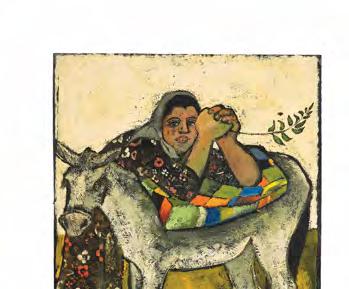





Henry Faulkner: eccentric, flamboyant, exploitative. However one described the Kentucky artist, no one could deny his creative genius.
“He had a purpose for everybody, and they were to facilitate him in his endeavors, and he used them,” said John Hockensmith, a friend of Faulkner’s and publisher of The Gift of Color: Henry Lawrence Faulkner—Paintings, Poems, and Writings, a collection of Faulkner’s paintings and writings interspersed with the artist’s biography.
“He was different to everybody, and the only people that he looked up to were … people who had tremendous fame. You go down his collectors list, and you see the people that Henry revered. The rest of us were bit players in his theater.”
But Hockensmith is quick to qualify his portrayal of the man known for bringing baby goats to his own art exhibits or wandering down Lexington streets late at night, singing happily to his sleeping neighbors.
“He was electric. He would suck the oxygen out of any room … You couldn’t help but be transfixed and be caught in his mystical ways,” said Hockensmith, a Georgetown art photographer. “Henry was many things—outrageous at times, by choice or not—but that was not the totality. It was an honor to be in the presence of someone who was in command of so much creativity.”
Before his death in a December 1981 Lexington car accident, the abundantly creative Faulkner had produced around 5,000 pieces of art and written numerous poems.


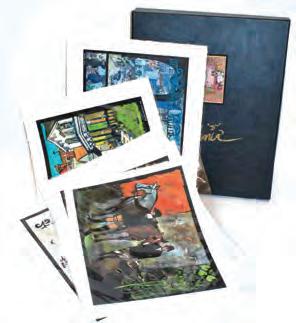

That legacy will be honored at Lexington’s Headley-Whitney Museum of Art with the Henry Faulkner Exhibition: Celebrating Faulkner’s 100th Birthday. The exhibition, which opens Sept. 8 and runs through Nov. 12, will offer visitors a comprehensive retrospective of the Kentucky native’s work. Prior to the opening, a documentary film about the life and creativity of the artist titled Henry Faulkner: Poetry in Paint will premiere at the Kentucky Theatre on Sept. 7.
Faulkner was born in Holland (Allen County) in 1924. At age 2, he lost his mother and was placed in foster homes before settling with the Whittimore family near Falling Timber Branch in Clay County. But his effeminate nature, coupled with rebellious and unorthodox tendencies, led his foster father to return the then-15-year-old to a Louisville orphanage. Faulkner wouldn’t stay there long. His wanderlust and passion for the arts inspired him to travel the globe over the decades. He eventually settled in Lexington after making a name for himself in the art world.


“Henry was a vagabond, a scam artist, seeing his way through any door … He was audacious, much more so than outrageous,” Hockensmith said. “He was not just the naive Kentucky bumpkin that was part of his sales pitch. He was highly schooled in both East and West Coast arts and European arts, trained by other professionals. They liked him because he captivated them, because they saw talent.” Q
For more information about the Headley-Whitney Museum’s Faulkner exhibit, visit headley-whitney.org.
[A portion of this article previously appeared in the November 2018 edition of Kentucky Monthly.]








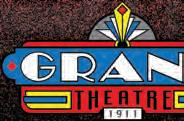


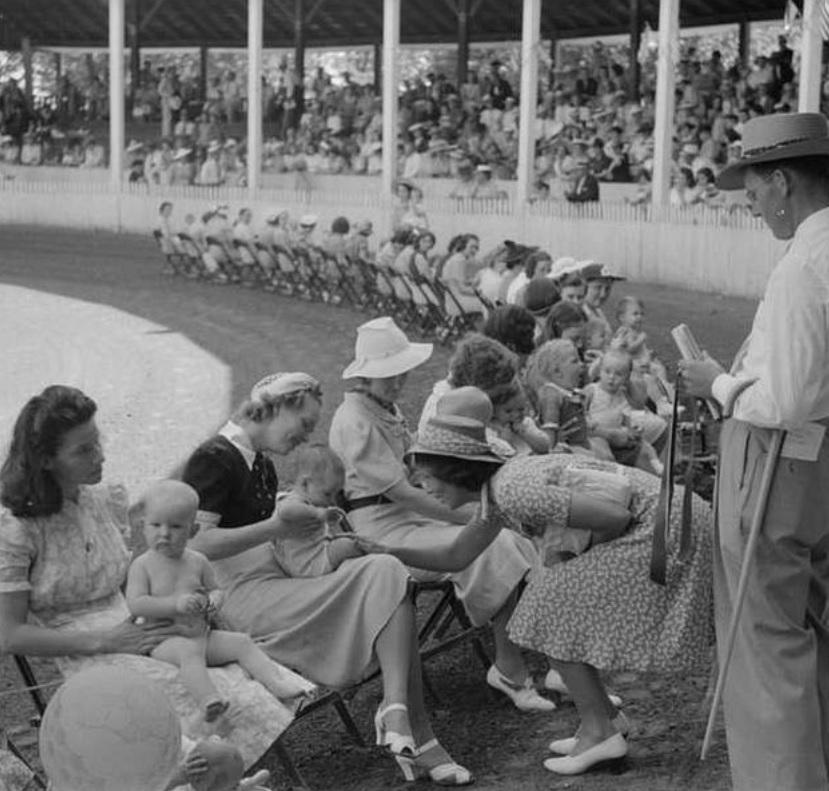

George Johnson (May 11, 1885-Nov. 2, 1968), in stripes, with cousin Paris Vaughn around the turn of the century. They lived in Pittsburgh, a small community between London and East Bernstadt.

George was married to May Morin Johnson (Aug. 14, 1888 –June 26, 1961). They are buried in Southard Cemetery in London, in Laurel County.
I am interested in learning more about this cemetery. If anyone has information about the Johnsons or Southard Cemetery, please email deb@kentuckymonthly.com
Barry Johnson, Port Saint Lucie, Florida
Lois Wilcox, a longtime reader and contributor to Kentucky Explorer, celebrated her 90th birthday on July 29 and welcomes correspondence at P.O. Box 22, Mount Gilliad, Ohio 43338.
Pictured is the proud father holding the winner of the Healthiest Baby Contest (photo on cover) at the Shelby County Fair in 1940.

These postcards are from days long ago but far from forgotten. They are from Herby Moore’s Wondering Woods Amusement Park near the entrance to Mammoth Cave National Park. Wondering Woods was razed in the 1970s, and the land is now owned by the National Park



 By Jackie Young, MLS, Ed.D Library Director, Sullivan University
By Jackie Young, MLS, Ed.D Library Director, Sullivan University
Who wouldn’t like to win a blue ribbon at the Kentucky State Fair? Better yet, who wouldn’t want to eat a blue ribbon winning-cake? It is state fair time, and bakers all over Kentucky are honing recipes, practicing up a storm, and dreaming of taking the cake this month. Let’s look back at some of the winners from 30 years ago.
While state fairs, in some form, have been held in Kentucky since 1816, when Col. Lewis Sanders had a livestock show on his Fayette County farm, various Kentucky “State Fairs” were held throughout the 19th century. After a close competition with Owensboro, the first official, statefunded State Fair was awarded to Louisville in 1902 and held at Churchill Downs. Owensboro hosted the fair in 1903, but after legal issues arose over funding, no fair was held in 1904. Lexington hosted the 1905 fair, and the 1906 fair returned to Louisville, where it has remained since.
Culinary competitions, considered an area in which women competed, played a role in 19th century fairs. The first Kentucky State Fair in 1902 featured a “women’s department.” A Courier-Journal article dated Sept. 27, 1902, listed all the winners of the livestock and horse divisions, but simply mentioned that ribbons were placed on the winners in the women’s department.
Fast forward 91 years to 1993. The cake winners from that year included:
n Lavon Blakeman (1927-2009), originally from Danville and a perennial winner, won with a Triple Layer Devil’s Food Cake.
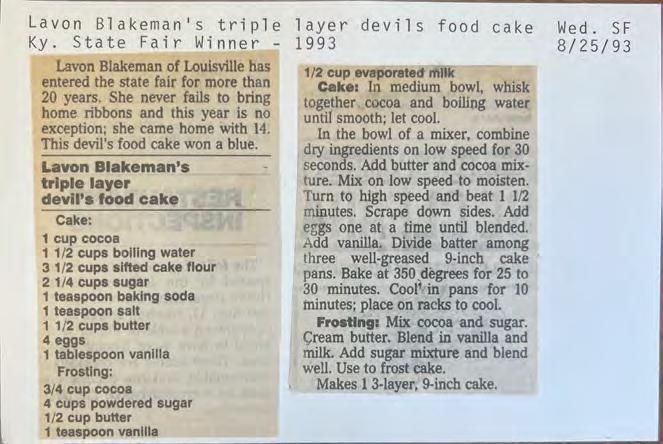
n Margaret Chase of Louisville, also a perennial winner, took home a blue ribbon for Angel Food Cake Deluxe.
n Mr. Robin Horton (1954-2021) of Fern Creek won with his Spice Cake with Caramel Frosting.
So, which cake are you going to make this weekend?
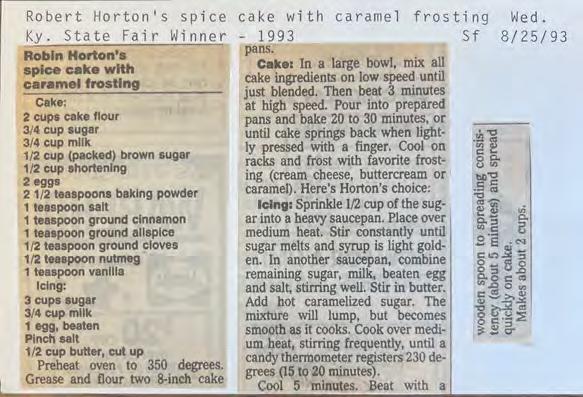
In 2021, Sullivan University acquired The Louisville CourierJournal’s culinary archives, which includes 30,000 recipe cards, 1,500 cookbooks and decades of newspaper clippings. Each month Kentucky Explorer shares a piece of this history, along with a recipe or two, and takes a look at how Kentucky cooked. If you would like more information about Sulivan University, please visit sullivan.edu or call 1.800.844.1354.
… in 1858 and formed from Madison, Estill, Owsley, Clay, Laurel and Rockcastle counties.
I lived in a Morehead trailer park owned and run by a local bootlegger in the late 1960s. He was well-known around town, including by the city police department. The department at that time was much like the one on The Andy Griffith Show, with three overweight Barney Fifes. Morehead was a dry town, so the bootlegger was busy, especially during football season.
To protect his privacy, I’ll call the bootlegger Squirt One day, he saw my 12-foot, flat-bottom aluminum boat and said, “Let’s go frog gigging tonight ”
We knew a creek that meandered alongside the town had some frogs because you could hear them at night. By 10:30 p m., we had eight to 10 nice frogs.
Squirt said, “Let’s go up to College L ake. I bet there are some big frogs up there.”
He was right, and we filled up our potato sack with a bunch of frogs. As we were leaving the lake, we were
stopped by the city police, issued a ticket for being out on the lake, and told to be in court the next day.
The police and the deputies thought it was funny that the local bootlegger was in court for frog gigging.
They tried to question us but ended up laughing through the whole thing.
“Are there big frogs up on College Lake?”
“I would have confiscated the frogs!”
“How much you take for that rifle?”
After each question, they would throw their heads back and slap their legs
The judge asked the campus police (of which there were two officers at that time), “Why can’t the city folks enjoy that lake?”
There seemed to be some difference of opinion on how College Lake was used. The judge ruled: “Since we don’t have a law about what goes on up at that lake, I’m going to dismiss this case!”
Squirt and I asked the town nurse who lived nearby to fry up our frog legs. It turned out to be one night and day I’ll never forget.
By Donnie Joe Dampier, GeorgetownIt was Elvis Presley’s performance on Nov. 25, 1956, in Louisville’s Jefferson County Armory, his first Kentucky appearance, that brings back my personal memories of Elvis. Presley was the king of the new music our music. We called it “rock ’ n’ roll.” It sold millions of 45-rpm records spun on portable players lugged to the basement and backyard parties, where our American Bandstandwatching generation dipped when they slow danced and shook when they danced fast

So there I was: Donnie Joe Dampier, a bit out of my element with a rural small-town upbringing. I was a graduate of Carlisle High School, then a University of Kentucky student, at my first Elvis concert. I went wearing my red-nylon James Dean jacket, hoping to attract some of the girls, but for nil. As a part of an overwhelmed male minority that night in Louisville, we were frequently pushed and jostled aside by the multitudes of young women trying to position themselves to get closer looks at Elvis.
Despite the distractions, Elvis put on a great show. Those attending that November night of 1956 under the blue moon of Kentucky were figuratively part of the party leading to the coronation of The King!
I grew up in a time when family travel included our 1955 Buick with 4/50 airconditioning (four windows down at 50 miles per hour).
Mid-20th-century travel was built around our nation’s highway system, scenic two-lane roads and advertisements painted on barns. People traveled through cities and rural communities, where locally owned diners, service stations, and hotels and motels accommodated travelers. Service station attendants pumped your gas, washed your windshield, and checked your oil and tire pressure. If you were lucky, Mom and Dad would let you buy a Moon Pie and and RC.
The Commonwealth has always been rich in tourist attractions. Many of the popular roadside stops are no longer with us. There are far too many to mention, but I would like to reflect on a few.
Traveling north on U.S. 25E through the Cumberland Gap and across the mountain into Middlesboro, once known as the “Athens of the Mountains,” one could visit the Hotel Cumberland Its upscale accommodations and mountain backdrop were popular for years before its closure and demolition.

Motor hotels, or motels, as they became known, popped up to accommodate travelers with modern conveniences such as airconditioning, color television, direct-dial telephones and swimming pools. One that comes to mind is the Lakeview Motel that overlooked Lake Cumberland on U.S. 27 south of Somerset. The motel no longer stands, but the restaurant continues to operate today.
A true piece of Kentucky’s roadside Americana was Tombstone Junction, a westernthemed park located between U.S. 25W and U.S. 27 on Route 90 near Cumberland Falls. Tombstone Junction, with its Old West storefronts, was known for the Red Garter Saloon and

Cumberland Falls Scenic Railway. When I was a youngster, my family spent the night in a small cottage at the Falls Motel, located near the entrance of Tombstone Junction. The next day, we saw Lincoln County native Red Foley sing on stage at the Red Garter Saloon. Through the years, the park hosted big-name entertainers such as Dolly Parton and Loretta Lynn. Today, little remains from this once-thriving theme park, and the site of the Falls Motel is a vacant lot.
Travelers on U.S. 31E/South Green Street in Glasgow could stop at the iconic Dutch Mill Village, which included a service station, gift shop, restaurant and overnight cottages with a windmill theme. Today, Dutch Mill Village is nothing more than a memory and a vacant lot.

Another popular roadside attraction was the sky lift at Jenny Wiley State Resort Park, located just off U.S. 23 in Prestonsburg. It was exciting for young and old to ride the chair lift to the top of the mountain, where you could see for miles, with views that accented the beauty of Kentucky.

With continued construction of the interstate highway system, we saw tremendous growth in chain motels like Holiday Inn and Howard Johnson’s motor lodges that were built along the new highways. People could travel faster and on multiple lanes, which brought a sad decline to roadside Americana.
Recently, my wife, Becky, and I were traveling on U.S. 31W through Horse Cave and stopped to look at a field that once was home to the historic Owens Hotel. It makes one wonder about the many visitors by automobile and train who spent the night in the little south-central Kentucky community in an era that long since has passed.
For many of us baby boomers, roadside Americana is a throwback to another time and to special memories. Traveling on America’s backroads today, when I see an old barn with a faded advertisement that reads, “SEE ROCK CITY,” I just sit back and smile.



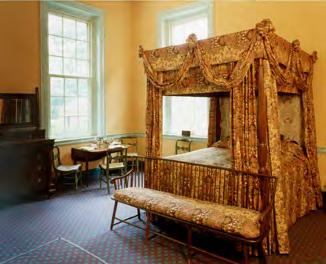 By Kathy Nichols, Executive Director, Farmington
By Kathy Nichols, Executive Director, Farmington
In the mid-1950s, a group of influential Louisvillians created Historic Homes Foundation (HHF), inspired by landscape architect Anne Bruce Haldeman and headed by publisher Barry Bingham Sr., to purchase and restore the old Speed house, Farmington, and open it as a “public shrine.” On April 28, 1959, Farmington Historic Home opened as the first house museum in Jefferson County and quickly became one of the most visited historic sites in the Commonwealth.
HHF founders knew Farmington had been a thriving hemp plantation carved out of the Kentucky wilderness. It was home to John and Lucy Gilmer Fry Speed’s family. Construction of the Speeds’ brick residence, an outstanding example of Federal-style architecture, began at Farmington in 1815. The house, identified in the original building contract as the design of Paul Skidmore, was an
unusual and ambitious plan clearly influenced by the architectural designs of Thomas Jefferson
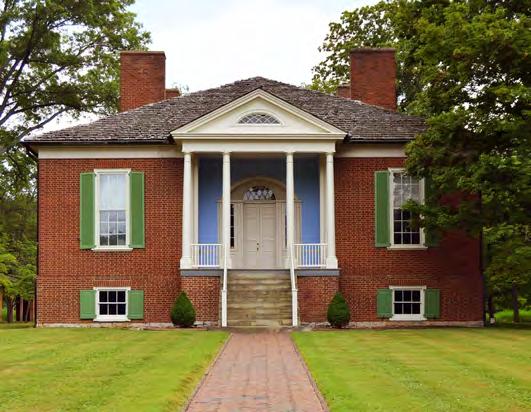
Although a few appurtenant buildings still stand—including a spring house and a barn— none of the cabins that housed enslaved people remained on the 18 acres HHF eventually acquired, yet we know that enslaved Black people almost certainly had a big hand in building Farmington. At the time of John Speed’s death, at least 70 enslaved Black people performed the physical labor required on the plantation.
John Speed (1772-1840) and Lucy Gilmer Fry Speed (1788-1874) came from wealthy families who moved to Kentucky County, Virginia, before 1790. Their fathers, like many wealthy Revolutionary War heroes, sought to make fortunes in land speculation in the newly opened territory west of the Appalachian Mountains. Immigrating at separate times, the Speed and Fry families and their enslaved people traveled over the Wilderness Road and settled near Danville.
After John’s first wife, Abigail LeMaster Speed (1768-1807) died, he took their daughters, Mary and Eliza, back to Mercer County. In November 1808, he married Lucy Gilmer Fry and returned with his new wife and family to the land that would become Farmington. The 554-acre tract was carved from celebrated Jefferson County “Beargrass Preserve” lands that Speed purchased with partners. An August 1809 letter from Speed to his partner, William Pope Jr., reports that “we are now living in our cabins.” Farmington was 6 miles from Louisville in the Kentucky wilderness being turned into crop lands by settlers. Enslaved men immediately began building cabins, cutting the woods, and clearing vast sections into fields for planting corn and hemp.
Women planted kitchen gardens, tended poultry, cattle and hogs for food and provisions. Wild game was common. One day, Lucy Speed took a walk to the spring with her baby and was chased back to the cabins by a bison!
In addition to Mary and Eliza, John and
Lucy had 11 children, nine of whom survived to adulthood. Farmington was a busy place over the years, with 13 Speed children—seven girls and six boys—in residence at various times. All the Speed children, male and female, were well educated. Research indicates several children attended schools away from Farmington.

Music, an important form of entertainment at Farmington, was taught by Anton Heinrich, a Bohemian composer and violinist who lived with the Speed family for a year and a half beginning in 1819, teaching Mary and Eliza to play pianoforte, to compose and to give concerts. Both Speed daughters became accomplished pianists, and Mary inherited her father’s pianoforte.
Strong connections and family ties existed among the enslaved families at Farmington. Morocco, much favored and written about, and his sister Phyllis were likely a wedding gift from Lucy’s father, Joshua Fry. Phyllis and Morocco’s sister Jinnie was enslaved at nearby Oxmoor Plantation, owned by the husband of Mildred Ann Fry Bullitt, Lucy’s sister. When she was born, Phyllis’ daughter Diana was given to Mary Speed, and she remained with Mary, who never married, into the 1860s, when Diana, her daughter Dinnie, and son Henry successfully freed themselves and lived in Indianapolis until “after the war.” Today, the descendants of David and Martha Spencer and of Abram and Rosanna Hayes have generously shared family research and oral traditions to help inform our interpretation. Ongoing research continues to identify and connect people who were enslaved at Farmington.
Hemp, a bast fiber, was grown by Kentucky farmers to make twine and rough bags for the Southern cotton market. Production of hemp necessitated a large labor force and ensured that Kentucky would be a slave state. Slavery was an integral part of life during the Speed family’s 50-plus years on the property. Enslaved men and women worked in the house and its dependencies as agricultural field laborers and in “manufacturing” at a ropewalk and weaving house where the Speeds’ hemp was processed on the plantation, according to references from John Speed’s 1840 probate inventory.
Archaeology has uncovered several foundations near the present non-historic “carriage house,” including one that is likely the log house occupied by the Speed family during their first years on the property. This probably became a cabin for the enslaved in later years. Unfortunately, little is known about housing for the enslaved at Farmington. A reproduction outdoor kitchen, built on the footprint of the original in 1992, helps interpret the lives of people enslaved at Farmington.
Farmington’s best-known guest, Abraham Lincoln, came to Farmington in 1841. Joshua Speed and Lincoln developed a close friendship while roommates for four years in Springfield, Illinois. In late 1840, Lincoln broke his engagement to Mary Todd and fell into a deep depression.
Joshua, heading to Farmington after the death of his father, John, invited Lincoln to visit him. Lincoln arrived at the Louisville wharf in August. At Farmington, the young lawyer gained new perspectives through immersion in a lifestyle foreign to his previous experience. It is the
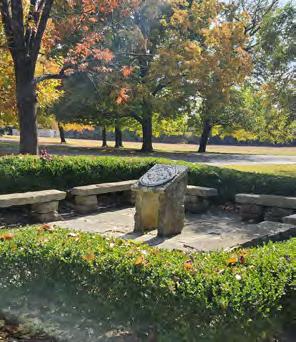
only time the future president lived an extended period, approximately three weeks, fully immersed in the culture of the Southern planter elite. Lincoln’s Sept. 27, 1841, letter to Mary Speed shows the friendly, affectionate relationship that existed between Lincoln and his host’s family. Lucy Speed seems to have taken a special interest in her son’s friend. As a token of affection, she gave Lincoln an Oxford bible. Years later, President Lincoln sent an autographed photograph to Lucy referencing the gift. The Speed children all supported the Union during the Civil War, and Joshua and brother James served as unofficial advisers to the president. In 1863, Lincoln appointed James attorney general of the United States.
Lincoln’s letter to Mary Speed contains his earliest known personal comment on the enslaved. When he and Joshua boarded the steamboat Lebanon to return to Springfield, he saw men being taken for sale “… strung together precisely like so many fish upon a trotline.” Years later he said, “… that site was a continued torment to me …” Joshua later claimed that seeing the slaves on board that ship helped focus Lincoln’s emancipationist sentiment.
Today, guided tours of Farmington’s main house and free, self-guided grounds tours explain the history of the plantation and the roles of the support structures on the property. The Farmington Board of Regents recently completed a strategic planning initiative with nonprofit consultant Ashley|Rountree that will help the site restore and care for structures as we continue important research into the people who lived at Farmington.
Farmington is growing hemp again and will feature a Hemp Dinner on Oct. 28, 2023. Whether you have an hour or an afternoon, we hope you will visit, take a tour and hear Farmington’s stories.
Farmington
3033 Bardstown Road
Louisville 502.452.9920
VIsitFarmington.org
In the mid 1800s an attorney, politician and farmer in Franklin County was in search of a vegetable he could grow for his wife, Sarah, who had a nervous stomach. He had to find something she could digest easily but that still tasted good. He knew where he had to go to find the solution: his greenhouse.
John “Jack” Benton Bibb was born in Virginia on Oct 20, 1789, the youngest son of a wealthy planter who later became a Methodist minister. By the time Jack was in his early teens, his father and elder brother George had set off for Kentucky. Jack followed, first settling with the family in Louisville, then Lexington, and finally Russellville in Logan County. During his time in Lexington, Jack developed a passion for two things: horses and horticulture. These would have a profound impact on his life. Jack also was realistic. Like his older brother, Jack began to study law.
On his 23rd birthday in 1812, Jack was ready to sit for the oral examination to receive his license to practice law. War stopped his plans.
Like many Kentuckians, Jack joined the 4th Kentucky Infantry Regiment under Gen. Isaac Shelby to fight in the War of 1812. Kentucky supplied more men, ammunition, gunpowder, clothing and food than any other state.
Jack enlisted as a private, but because of his natural leadership skills, he quickly was promoted to lieutenant. In the Battle of the Thames on Oct. 5, 1813, Jack’s bravery under fire earned him a promotion to major, a rank he held until 1850.
With a minor wound, Jack returned to Russellville, where he continued his law studies, receiving his license in 1814. He set up a practice in Russellville. The people loved his easy-going nature and his ability to solve complex problems without irritating parties on either side. As a result, the voters of Logan County sent him to the Kentucky House of Representatives in 1827. Returning home in 1829, Jack met and began courting a widow, Sarah Perkins. Like him, Sarah was born in Virginia and had immigrated to Kentucky. They were married on Aug 22, 1831.
After two terms in the House and two terms in the Kentucky Senate, Jack, at the encouragement of his brother George, moved permanently to Frankfort. He built a house at 411 Wapping Street, which he named “Grey Gables” in homage to the popular Nathaniel Hawthorne story of the period.
Although out of elected office, Jack maintained close contact with his former colleagues by keeping a law office. His home was within walking distance of both the Capitol building and the law offices he shared with his brother.
Jack and Sarah had no children, but his brother’s large family and many frequent guests filled his house with laughter and song. His many guests marveled at the number of flowers and vegetables that graced his dining table. Every guest knew the delicacies were grown in Jack’s greenhouse. Jack had been experimenting with different varieties of lettuce, hoping to grow a variety with a longer life. Most lettuces could be grown only during the warm or hot periods of the year. Jack wanted one he could start in April and make last until late October or even November.
He started experimenting with a type of butterhead lettuce. It was small and had a tight head and delicate petals. After many failures, he developed a lettuce that he nicknamed “limestone lettuce” because of the water on which it thrived.
The lettuce helped calm Sarah’s nervous stomach. It had a smooth texture and a light buttery flavor. Guests raved about the lettuce, saying it was a meal in itself. It needed no dressing to enhance the flavor. They encouraged Jack to sell it commercially. But because of the leaf’s delicate nature, transporting it any distance was not feasible. Jack was happy to keep the lettuce a family secret. He never applied for a patent on his lettuce.
As the years passed, Jack’s lettuce became legendary around the Bluegrass State. Limestone lettuce became a staple at all horse-racing enthusiast gatherings. People said that “Horse racing was the sport of kings,” and limestone lettuce was the “royalty of lettuce ” It also was known as the “orchid of salads.”
Except for William Grenewein, Jack’s story might have died in 1894 with his burial in the Frankfort Cemetery next to his wife. When Grenewein tasted the lettuce at a horseracing event in 1920, he went wild. Negotiating with his host, Grenewein received five seeds for two bottles of premium bourbon. In his greenhouse in Louisville, Grenewein guarded the plants like the gold in Fort Knox. He hoped to monopolize the market for what he named “Bibb lettuce ”
Grenewein knew refrigerated train cars could ship the lettuce from Kentucky across the country. Soon, diners in New York, Boston and Chicago were enjoying Bibb lettuce. Jack’s greenhouse still stands behind the house on Wapping Street in Frankfort.
“To be a great champion, you must believe you are the best. If you’re not, pretend you are.” Muhammad Ali

The first school for ladies in Madison County was the Madison Female Academy, also known as the Madison Female School. Founded in 1857, the school taught young women painting, drawing, French, chemistry and geography.
The Madison Female Academy was incorporated Jan. 26, 1856, with 12 men as trustees. The school flourished and attracted students from a large area. It became well known as a “Southern finishing school,” much like Science Hill in Shelbyville, which was operated by Julia Tevis
The envelope pictured here is an early example of a stamped design, based on a three-cent Washington stamp from the issue of 1851-1856. An early announcement said the school was situated in a large brick house on top of a hill south of Richmond. The building contained both hot and cold baths, closets and well-ventilated rooms above ground. The school grounds encompassed 10 acres and included tennis courts and other outdoor amusements.
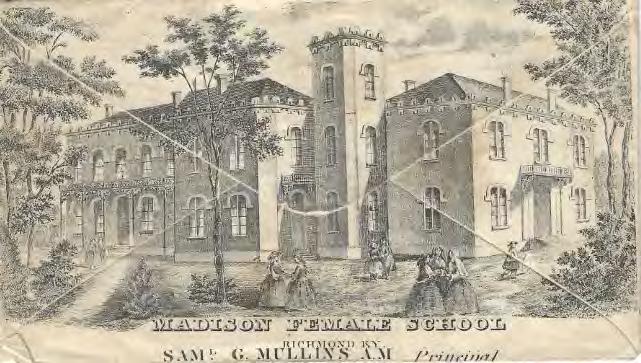
This early envelope indicates that Samuel G. Mullins A.M. was the principal. In 1894, two women served as co-principals—Mrs. A.E. Bourne and Miss Alice Lloyd (not to be confused with Alice Spencer Geddes Lloyd, who started Alice Lloyd College in 1923). Both women previously had worked at Hamilton College, a private women’s college in Lexington.
Madison County: 200 Years in Retrospect by William E. Ellis,
H.E. Everman and Richard D. Sears tells us the school’s “most famous historical occasion was not a graduation but a battle.” Like many schools during the Civil War, the Madison Female Academy was used as a hospital for the Union Army during the Battle of Richmond. The teachers and students helped care for the wounded. In February 1863, the trustees filed a claim against the United States for damage done to the property while it was used as a hospital. They did not receive a payment, which was $5,200, until 1915.
As public schools began to develop and the opportunities for girls to be educated increased, schools such as Madison Female Academy began to ebb, and it closed in 1919, when the property was leased to the Richmond Board of Education for 99 years. It then became Madison Middle School.

During the Prohibition years, 1919-1933, the production, transportation and sale of alcohol were illegal. But those who wished to imbibe were able to find their drink of choice created by people who worked by the light of the moon, also known as moonshiners.
Moonshiners were an industrious lot, distilling alcohol in homemade stills hidden away in forests, hollers and deserted fields. Authorities searched for these illegal operations on foot. Finding human footprints in out-of-the-way sites could lead them to the operation.
To get around this snag, some clever home distillers wore cow shoes such as those pictured here. The resulting cow footprints stirred up no suspicion and threw the law off the track.

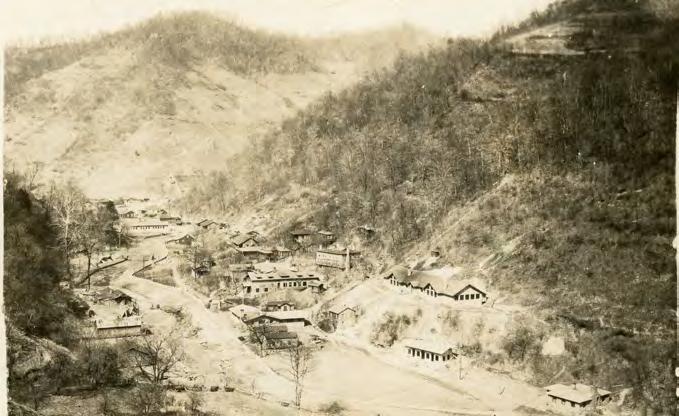 By Jennifer Hall and Ty Reagan, Pippa Passes
By Jennifer Hall and Ty Reagan, Pippa Passes
In the early 1900s, a frail, 40-year-old woman traveled from Boston to the isolated eastern Kentucky hills, deep in the heart of the Appalachian Mountains. Alice Spencer Geddes Lloyd, who had been given six months to live by her doctor, made the arduous journey in the hope that the fresh air would strengthen her.
Arriving in Knott County, she discovered something more important than better health. She found poor, yet proud, people who needed her. It was there that Lloyd discovered her purpose in life and set out to educate the mountain people. This year marks the 100th year of Alice Lloyd College, which was established as Caney Junior College in 1923.
Shortly after she arrived in the area, Lloyd met a local resident, Abisha Johnson, who told her that he had had a vision from God that she was sent to bring education to the people. He promised her enough land on which to build a school if she assured him that she would educate his children. Lloyd accepted, and after settling in, she quickly realized the potential of her students. Inspired by the mountain people’s eagerness to learn and better themselves, Lloyd knew she needed money to sustain her endeavor. She didn’t turn to the government but rather to America’s free enterprise system and sought funding from friends in New England.
She sat behind her typewriter for countless hours, composing thoughtful and persuasive letters asking for money, books, supplies and teachers. Lloyd’s letters proclaimed that “the leaders are here, waiting to be trained and given a chance.” One of the thousands of letters Lloyd wrote found its way to June Buchanan, who “just couldn’t resist Alice Lloyd’s burning vision.”
Planning to visit Caney Creek for only a short stay and to see Lloyd’s work first-hand, Buchanan remained in Pippa Passes and dedicated her life to serving generations of students until her death in 1988. The Caney Creek Community Center, which was founded in 1917, grew. By 1923, it had developed into the Caney Junior College, renamed Alice Lloyd College after Lloyd died in 1962.
Lloyd and Buchanan did more than teach the mountain folk how to read and write; they provided an affordable education. To cover the cost of tuition, college students worked. The college even set out to support its students in graduate studies, promising that alumni would return to their communities as doctors, lawyers, educators and other professionals. Alice Lloyd College built character and produced leaders by teaching the Purpose Road Philosophy, which instilled purpose, goal-setting and traits that enabled students to become leaders in their rural communities. That philosophy remains the foundation for education today at the college, as students are prepared to become leaders upon completing their literal and figurative walk along the Purpose Road.
In the early years, the college relied
Students of Caney Junior College were required to wear uniforms. Female students wore “Caney girl” uniforms that consisted of a white skirt, a white top and a red tie, and male students were required to wear dress pants, dress shirts and a tie. June Buchanan kept a wall of ties in her office in case a male student needed one. Courtesy of Alice Lloyd College.

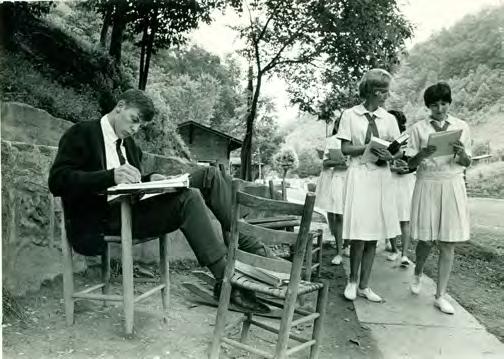
heavily on funding from Lloyd’s connections across the country. Money was tight, and Lloyd feared the worst for the Caney Junior College.
In December 1955, she journeyed from Pippa Passes to California to appear on This Is Your Life, hosted by Ralph Edwards. Lloyd and several students were featured on the television show and pulled at the heartstrings of numerous viewers with stories of their beloved school. At the end of the episode, Edwards made a plea to the audience: “Let’s keep Lloyd’s dream alive.”

Today, Alice Lloyd College remains true to its roots by providing a quality, character-based education while charging no out-ofpocket cost for tuition. The generosity of friends and donors across the country keeps Lloyd’s vision alive. Since its beginning, the college
has relied on private individuals and foundations instead of accepting any direct government funding. Lloyd and Buchanan’s efforts—along with the support of faculty, staff, students and kind friends—have established one of the most unique colleges in America.
Obviously, the campus looks vastly different than it did in 1923. Enrollment is around 600 students, with 150 coming from out of state. Course offerings in the 1920s included education, English, foreign language, fine arts, mathematics, science and social science and led to a certification from Caney Junior College. One hundred years later, students can choose from 18 majors, with the most popular being biology, criminal justice and elementary education.
Though Alice Lloyd College has grown, the mission remains the same: providing an affordable education to Appalachia.
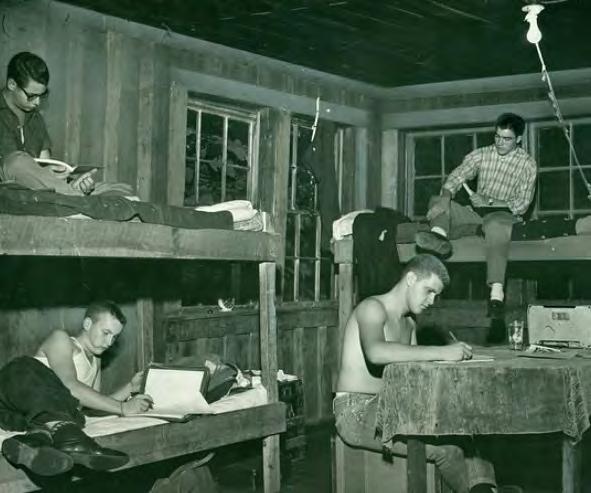
Alice Lloyd College will celebrate its centennial on Oct. 7 with a special ceremony during the college’s Appalachia Day Homecoming. For more information, visit alc.edu.
WANTED: Paying cash for large diamonds; collections of vintage wrist and pocket watches; gold and silver coins; sterling flatware and serving pieces; gold and silver jewelry; collections of arts and crafts and pottery; antique advertising signs; antique walking canes; pocket knives; collections of antique guns and swords; military collections; early handcrafted crocks and jugs; and musical instruments. Call Clarence, buyer for more than 35 years, 606.531.0467.
Reach 120,000 readers with classified advertising available in Kentucky Explorer. Classified ads $50 per issue (up to 25 words). Contact Deborah Kohl Kremer at deb@kentuckymonthly.com
To the surprise of some of my friends and colleagues who generally assume that, due to the nature of my work, most of what I’ve done for the past four decades is play outside, I am not very knowledgeable about birds. That is, identifying birds by sight or sound.
I do OK on sight with the marquee players—Cardinals. Robins. Bluebirds. Mourning doves. Crows. Eagles. (Mature bald eagles, that is. The whitefeathered head and tail are sure giveaways.) Hawks (red tails are generally a sure thing, but specifics elude me on most other hawks). Male mallard ducks (those are the ducks with the green heads). And a few others. But I’m certainly not a bird expert, and, when it comes to identifying birds by sound, I’m generally, well, a birdbrain.
Several years ago, while attending a conference, I sat in on a birding seminar. I was advised to arrive early, as the birding seminars were popular. I arrived late to discover the room filled. I was expecting a talk on bird migrations or something similar but was surprised to hear an elementarylevel talk on setting up backyard bird feeders. The speaker, a round, ruddyfaced man, was passionate and wellinformed about his subject. His nearly hour-long presentation included the pros and cons of different styles of bird feeders and what type of foodstuff to put in them to attract various birds, followed by a vigorous question-and-answer session. Afterward, I sought him out and said that, although I wasn’t really a birder, I had enjoyed his talk and might set up a backyard feeder.
“I hope you do,” he said. “You’ll enjoy it.”
“How do you attract birds to the feeders?” I asked. He smiled sheepishly. “Don’t worry about that,” he said. “They’ll find you.”
I eventually hung a tube feeder outside the kitchen window, and a few birds found it. Then a few more.

Then a few more. I soon found myself refilling it twice a week.
I found the birds mildly entertaining. My wife enjoyed them more than I did. We added a second feeder. I was soon refilling both twice weekly.
places around the globe, there are packs for those locales, too. In all, according to Cornell, the entire bird pack software includes more than 10,000 bird species on six continents. I walked out my back door and onto the deck. A handful of birds scattered from the feeders. The app has a photo ID function, but I turned on its “Sound ID” and waited. Within seconds, it had detected an American cardinal, a brown-headed cowbird, a mourning dove and a tufted titmouse. There wasn’t a bird in sight. My wife has since used the app to identify nearly 40 birds from our backyard confines.
It’s enough to turn anyone into a birder.
I still could hardly tell one bird from another, and bird sounds were generally gibberish to my ears. Then one day, an email popped in from the Cornell Lab of Ornithology, which is widely known as a bird and birding authority.
At various times in previous reporting, I had contacted the birding folks at the Cornell Lab to check a fact or secure some birding data, so I was on its email list. The message was an offer to try the Merlin Bird ID app.
I normally ignore this type of trythis-app online pitch, but I downloaded this one. There were a few setup steps, including adding “bird packs,” which, basically, is geographic software. You could install all, pick and choose any of nearly 150, or follow the app’s location-based bird pack recommendations. I picked the one covering the Southeastern U.S., which includes Kentucky. But if you’re traveling to Namibia or Nepal or Honduras or dozens of other
According to the Cornell website, “Merlin’s ability to identify birds seems like magic but is powered by science.” I suspect artificial intelligence also plays a part in this scientific magic. It is impressive. It’s also free and available at the Apple app store or Google Play. For details, go to birds cornell.edu/home/ and use the All About Birds pulldown menu.
The COVID-19 lockdown proved, ironically, to be a boon to some outdoor recreation, including birding. According to the United States Fish and Wildlife Service, there were about 45 million birders in the U.S. before the COVID outbreak. Post pandemic, that number has swelled to an estimated 67 million. • • •
Kentucky is an Important Birding Area, according to the National Audubon Society. An excellent source for birding information across the Commonwealth, including recommended birding locations, is the Kentucky Ornithological Society, birdky.org
Mark Reese has spent many years sharing his outdoors passion with Estill County folks in his Citizen Voice & Times column. Through his well-written compositions, readers have received eyewitness accounts of a man who is enamored with hunting and fishing and makes astute observations of nature. In A Life’s Journey Outdoors, Reese presents nearly 200 of his past columns, connecting with those who share his joy and nudging others to explore the outdoors.
Reese emphasizes relationships, including interactions with his hunting dogs, his outdoors buddies, his fishing gear, community organizations that support the outdoors, and his spiritual nature that closely communes with the great outdoors.

Reese waxes eloquent on the seasonal changes—almost poetic in his thoughts. Though refraining from edginess, Reese doesn’t shy away from taking a stand on public issues, as seen in such chapters as “Technology or Ecology,” “Weighing In on Gun Ownership” and “A Changing Climate, a Changing Natural World.”
On occasion, the writer wades outside the state, but it’s quite clear that Kentucky is where he most desires to spend his time on his gratifying life journey.
 By Steve Flairty
By Steve Flairty
A Life’s Journey Outdoors, by Mark Reese, Butler Books, $24.95 (P)
The cause of the Civil War often is described as the struggle for states’ rights rather than the existence of slavery. But the enslavement of humans was the tipping point that forced—or motivated—the Southern states to begin seceding from the Union.
Author and historian Marshall Myers of Richmond takes a look at slavery from the viewpoint of how it progressed throughout Kentucky over the decades. He gives examples of the backlash, or the lack thereof, from the Fugitive Slave Act of 1850; the 1857 Dred Scott decision, which essentially stated that African Americans were not, and never could be, United States citizens; and the ratification of the 13th Amendment.
Myers includes a chapter about a book written by Elizabeth Keckley, the former seamstress for and friend of Mary Todd Lincoln
In Keckley’s book, Behind the Scenes: Or, Thirty Years a Slave and Four Years in the White House, she claimed she was trying to show Mrs. Lincoln’s good side, but she also included descriptions of the brutality slaves endured, shining a spotlight where it previously had not been shone.
This 100-page book is published by The History Press and includes several photos and illustrations, plus a helpful index.
By Deborah Kohl Kremer
Enslavement in Kentucky, by Marshall Myers, The History Press, $21.99 (P)

The Gift of Color is an unprecedented overview of the career of Henry Faulkner. This book is illustrated with over 100 vivid reproductions of his paintings, includes selections of his poetry and presents the reader with a narrative of his meteoric rise to fame. This comprehensive chronological compilation contains Faulkner’s moods that embodied the life and times of this prolific 20th century artistic genius.


Ilove old cars and trucks. I love to see them on the highway, kept clean and bright by their owners. I love them but don’t want one.
If I am so nostalgic about old things, like the old dogs in my picture in the February 2023 issue of Kentucky Monthly, then why not old cars? The reason I don’t want an old car is that each car I owned back in my younger days was a pain to keep running. They took up too much time.
My father ran a welding shop in the 1950s. Back then Shelby County lads with “hot” cars that teenagers dearly loved often wanted the back end of the vehicles lowered. For a set amount, my father would take an acetylene torch—careful not to get too close to the nearby gas tank— and heat the springs until sometimes they almost touched the axle. I saw this done numerous times, but I never tried it myself. Only once did a parent get upset, claiming that her dear son knew not what he was doing and wanted the procedure undone. Pop told her that was impossible, and eventually she quieted down a bit—but only a bit.
My first car was a 1947 Oldsmobile with a straight-six engine purchased from my father for $50. The owner had brought it into the shop in the early winter of 1957 because of a leak in the engine block. He had run only water in the cooling system the previous summer and had neglected to change to “modern” antifreeze liquids. The engine block had cracked after the first freezing night, enabling fluid to leak out. After being sure that all the liquid had drained out, Pop welded the crack with a nickel welding rod.
When the man dillydallied about paying for the repair, Pop bought the car and, unable to find an owner, sold it to me. My now-wife Charlotte and I dated in that old car, and I went off to college in the Olds.
But every few dozen miles or so, I would check the antifreeze. When I saw that it was low and, of course, saw the crack widening, I rewelded it.
On a frosty morn soon after Christmas, I slid the car into the back of a pickup truck and smashed the front end of the Olds. Back then, you could buy a “doghouse,” comprising the grill, bumper and fenders. After finding the right color, Pop and I detached the old, damaged parts and attached the new doghouse, and I was off and running as long as I rewelded the engine block every few dozen miles.
I kept the car for a couple of years but was elated when Pop bought a 1958 Ford for me. It was a fine automobile. Over the next few decades, I owned a Plymouth, a Dodge, a Chrysler and other older vehicles. My pride and joy was a brand-new 1971 Plymouth Satellite, which my just-comingof-age daughter wrecked one night, clipping a utility pole. Thankfully, she was not injured, but the front end was smashed. This time, not being able to find a doghouse, I had to send it to the junkyard.
With growing children, high school, early college expenses and all that, we could not afford a newer-made vehicle. We owned a succession of passable used cars, one
of which had a leak in the rear bell housing. Fortunately, I was in great shape, and, on the advice of a mechanic, I carried a grease gun with me. Every so often, I crawled under the back of the vehicle to take out the plug. If the fluid was low, I would pump grease into the opening until it began to overflow, then replace the plug, drive a few hundred miles, and repeat.
I drove the car to a \ summer seminar for college history teachers at the University of North Carolina at Chapel Hill and made this round trip a few times. The auto had a great air-conditioning system, except that I had to turn it on and off because the temperature control did not work.
After a couple of decades of teaching at Eastern Kentucky University, I began to prosper a bit. We bought one of the early Saturn models and eventually passed it on to our daughter. The best automobiles I have ever owned were Scott County-made Toyota Camrys. One Camry that I test drove at a local dealership had been assembled at a plant up north. In my best “Kentuckyese” I told the salesman that I wanted “one of ’em made in Georgetown,” and he sent off somewhere nearby for one. • • •
One of the strangest cars I ever owned was a 1974 Triumph four-door sedan. You may ask, “What in the world was Bill doing with a car like that?”
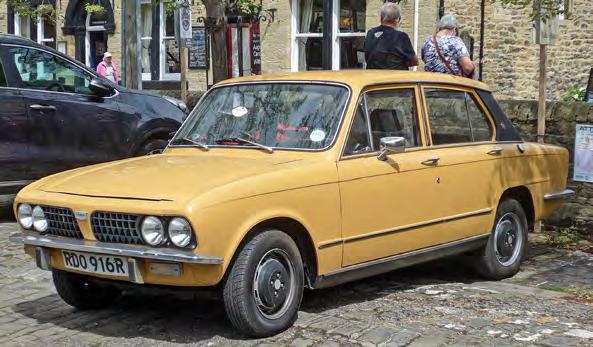
I was fortunate to receive a Fulbright grant to Massey University in Palmerston North, New Zealand, in 1989. At first, Lottie and I didn’t think about buying a car. After being there a week or two, our landlord suggested we look into it. We were “a wee bit” away from the university and decided we wanted to get out to see the countryside, called the “back-blocks” in New Zealand.
I looked at an advertisement in the newspaper for used cars, and our landlord, Ted Kingsbeer, took me to a lot to look at them. Most of the “good” autos I looked at had manual transmissions, and I needed an automatic if I was to negotiate driving on the “wrong side” of the roadways. I spied the used 1974 Triumph, which had a slightly yellowish finish. After a nervous test drive around town, I paid the salesman $1,500 NZ (about $750 in American dollars), bought insurance, and found my way homeward.
Lottie also drove the car, but we were both careful when negotiating the roundabouts, preferring left-hand turns when possible. The Triumph was comfortable to drive, a bit stingy on the gas, but—what the heck—we were going to
be there only a few months.
There was one big problem with the Triumph. It leaked oil like a sieve. The day after I pulled it into Ted’s carefully maintained carport, he pointed out a large oil slick. He told me to check with a mechanic friend of his, “Old Alf,” an Englishman with a thick accent. I left the car with Alf, who told me that it was “a bit loose in the mains,” which translated to the main bearings being worn out, but I could nurse it along by replenishing the oil occasionally.
For the remainder of our stay, I bought a succession of 4-liter thick oil containers and added oil occasionally. It poured out like molasses. During our short stay, we drove all over the North Island, even taking the ferry down to the South Island and driving to out-of-the-way locations. We particularly enjoyed driving the back-blocks, even gravel roads—“shingle,” the Kiwis call it.
Another problem with the car was that, if I drove faster than 70 kilometers per hour, the engine began to shake noticeably, so I slowed down. Speeding Kiwi drivers seemed provoked as we plodded down the main roads, occasionally waving hand signals of some kind.
We later found out there was a Kentucky Motors, another used car dealer in the town where we stayed. I called and asked the owner about the origin of the name, and he said that it sounded adventuresome to him, as there was racetrack nearby.

When it came time to leave Massey, we, of course, needed to sell “Old Vic,” as our Triumph had come to be called. A notice in the campus newspaper and local paper brought no action. Eventually, we had an inquiry.


By this time, it was early December—springtime down under—and I was suffering from a bad cold. The man brought his family with him for a test drive. I had warned him about the engine problem, and he drove on the highway at a high rate of speed. He agreed to pay $1,500 NZ for the car, and we met the next day at the post office to change ownership.

Charlotte and I had the opportunity to return to New Zealand about 18 months later. Rama McGee, the secretary in the Department of History, told me that the new owner of the Triumph wanted to get in touch with me.
She laughed and said she always told him I was somewhere in the United States, she knew not where. I know exactly what he had done. He had driven Old Vic too fast and had not replenished the oil, so the engine had seized up.


So much for my romance with automobiles. I am sure you have stories to tell of older automobiles and trucks that you dearly loved or hated.
I love the newer models with their modern frontwheel-drive systems, the 10,000-mile oil changes, the wonderful radiators that never need filling until they are flushed when they’re serviced, the radial tires that last 50,000 miles or more, the bucket seats (another reason for the demise of drive-in movies, I suppose), and lifesaving seatbelts.

Happy motoring!
Readers may contact Bill Ellis at editor@kentuckymonthly.com
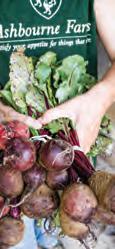




It’s August and time for our annual garden questionand-answer column. As I always say, if I don’t know the answer, I’ll look it up (or make it up!).
From the questions I’ve received over the last several months, it seems many problems reared their heads this summer. Diseases topped the list, with insect problems not far behind. Hang in there. Winter isn’t far off, and you’ll soon be wishing you were back in the garden.
Question: My apple and pear trees have a lot of brown, withered branches this year with little or no fruit. What happened?

Answer: Probably fire blight. Fire blight is a highly infectious bacterial disease that has been known to wipe out entire orchards in a single season. This past year, it was particularly insidious. On my own apple trees, I had some fire blight, even on trees supposedly resistant. Trees not known to be resistant, such as Golden Delicious and Ginger Gold, were hit hard.
Fire blight is spread by wet conditions in the spring and by bees foraging among the blooms. There’s not much you can do about the first, and you don’t really want to stop the latter. Controlling fire blight requires spraying at two critical times. The first is at the silver tip stage, when the buds just start to break. Spray liquid copper at that time. The second critical time is at bloom. You don’t want to spray insecticide then, but you can spray an antibiotic sold as Fertilome fire blight spray. Spray
when flowers just start to open and the bees start working.
Do not attempt to prune out fire blight in the summer unless you’re willing to dip your pruners in a 10 percent bleach solution between every cut. It’s better to wait for colder temperatures when the bacterium doesn’t spread. You can easily see the fire blight-stricken branches; they look like they’ve been burned. Cut at least 4 or 5 inches below the black parts. Burn all pruned branches; do not leave them in the orchard to re-infect next year.
Question: My tomatoes produced for a while, but then the whole plant seemed to die from the bottom up. Can I spray anything on the plants to kill the disease and keep them producing?
Answer: Not really. You are probably seeing early blight. It’s a disease that lives in the soil and splashes up on the lower leaves after rains. It’s the most common disease of tomatoes around here.
While you can’t do much about the disease this year, remember to plant
next year’s tomatoes in a different place, if possible. Mulch the soil to keep down the splashing, and after planting, remove the lower leaves. It also helps to spray a fungicide like copper (an organic fungicide) just after planting. There are a few early blightresistant tomato varieties, but none are widely available.
Question: My iris didn’t bloom well this spring, though my neighbor’s iris were glorious. What am I doing wrong?
Answer: There are several possible problems—not enough sun being one. Perhaps a nearby tree or shrub is throwing more shade this year. Or maybe the rhizomes are too crowded. Dig them up this month, divide them, and replant. While you’re doing that, you might also check for iris borer damage. Look for holes in the rhizomes, throw away any with holes, and plant only the firm, healthy rhizomes. You’ll get blooms next year and a bunch the following year.
Question: Bermudagrass has invaded my rose and peony beds. I pull it up, but it keeps coming back. Anything I can do to kill it without killing my beloved plants?
Answer: I, too, find Bermudagrass a scourge. Wonderful on a golf green but hateful in the lawn where it doesn’t stay put but sends its nasty little rootlets everywhere.
A deep mulch, well maintained, will keep it under control in the beds. But if it is out and about in the lawn nearby, it will send its children to play
over and above the mulch. If the bed gets overgrown with Bermudagrass, or any other grassy weed for that matter, you can use a product that contains sethoxydim cyclohexen (sold as Grass Beater, among other brand names) that will kill the weedy grasses without killing desirable plants, as long as the desirable plants aren’t grasses. It is sold as a concentrate, so read the label directions and mix with water accordingly. One or two sprays per season is usually adequate. It’s not cheap, so you won’t be tempted to overdo it.
Question: My roses are shriveling at the tip ends, and the leaves are puckering up. I water at least once a week during dry spells. Is there anything else I can do?
Answer: You might have aphids, or you might have spider mites. Aphids come in several colors— usually green—and are typically clustered at the end of stems. You may see lady bugs or ants if aphids are the issue.
Spider mites are little red guys that you’ll see near the end of stems but also on the undersides of leaves. They tend to thrive in hot, dry weather. Both aphids and spider mites suck juices from the plants, leaving the leaves and stems shriveled.
It’s not good to spray insecticides if your roses are blooming, but if not, you can spray with malathion, which should take care of mites or aphids. If the roses are blooming, you can use an insecticidal soap, which does little harm to beneficial insects, or you can blast the plant with a spray of water. That will knock the little suckers off the plant, and they don’t seem to know how to find their way back.
Tip of the month: If your yard was a weedy mess this summer, August through mid-September is the time to renovate it. Before you buy grass seed and herbicides to kill the existing lawn and replant, make sure you’re able to water the seedling grasses as they emerge. Not watering the growing grass is the number one reason lawns do not establish well.
Readers may contact Walt Reichert at editor@kentuckymonthly.com

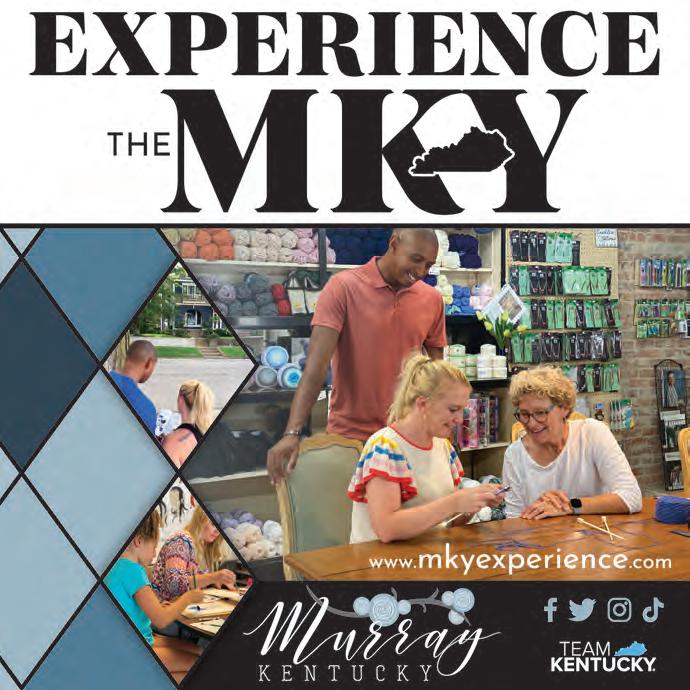
Ongoing West of Ninth: Race, Reckoning and Reconciliation Frazier History Museum, Louisville through Sept. 1, 502.753.5663
6
CeCe Winans in Concert, Carson Center, Paducah, 270.908.2037
13
Ongoing Music on the Lawn, Shaker Village, Harrodsburg, Fridays and Saturdays through Oct. 28, 859.734.5411
1
Full Moon Hike Bernheim Arboretum and Research Forest, Clermont, 502.215.7159
2
Castle & Key Springhouse Music Series: NVMD Castle & Key Distillery, Frankfort, 502.395.9070
20
Third Sunday Nature Walk Bernheim

Arboretum and Research Forest, Clermont, 502.215.7159
27
Frankie Valli and the Four Seasons in Concert, Rupp Arena, Lexington, 859.233.4567
Shaker Village's Music on the Lawn
3 Glier’s Goettafest Newport waterfront, through Aug. 6, 859.291.1800
4
Sounds on 2nd, downtown Beaver Dam, 270.274.7106
5 Fine Arts Weekend, Dinsmore Homestead, Burlington, through Aug. 6, 859.586.6117
28
8 Open Play Café, Maples Park, Crestwood, 502.222.9713
9 NIBROC Festival, downtown Corbin, through Aug. 12, 606.528.6390
16 Tim Heidecker: The Two Tims Summer Tour, MegaCorp Pavilion, Newport, 859.900.2294
23
10 Shakespeare in the Park –The Comedy of Errors, Boone Woods Park, Burlington, 859.586.7100

17
Kentucky State Fair, Kentucky Exposition Center, Louisville, through Aug. 27, 502.367.5000
24
Keeneland Library
Lecture Series: Jennifer S. Kelly, Keeneland Library, Lexington, 859.288.4224
29
30
Gospel Festival
Lu-Ray Park, Central City,, 270.754.5097
11
150-Year Anniversary Celebration, downtown Central City, 270.754.9603
18
The Savannah Sipping Society, Playhouse in the Park, Murray, 270.759.1752
25 Summer Supper Series, Lynwood Estate, Richmond, 502.320.9735
Ongoing Christian Music Festival, The Ark Encounter, Williamstown, through Sept. 9, 859.727.2222
7 a guide to Kentucky’s most interesting events
For a more extensive listing of events, visit kentuckymonthly.com.
12 Small Town America Festival downtown Mt. Sterling, 859.498.8732
19 The Woodland Art Fair Woodland Park, Lexington, through Aug. 20, 859.246.7024
26
Star Party Mahr Park Arboretum, Madisonville, 270.584.9017
Ongoing Kentucky Rivalries Exhibit, Frazier History Museum, Louisville, through September, 502.753.5663













































I made good time, despite the Canadian smoke, and arrived at 12:30 p.m. No one was there. Then 12:45— no one.
At five to one, a man I’ll call Tim because he reminded me of my brother unlocked the door and asked what I needed.
I explained that I was searching for information on a dog and had called ahead—that Jenny was supposed to meet me.
“Ain’t seen her,” Tim said. “What are you looking for?”
I explained that I was looking for information on a dog named Drum.
“I might be able to find that for you,” he said.
Over the next 35 minutes, I sat at a library table while Tim searched the collection. He searched; I sat. The antique clock in the corner ticked the minutes away.
Around 1:30, the long-awaited Jenny arrived carrying an overflowing bag from Wendy’s and a large Coca-Cola.
“Jenny,” said Tim, “this little fella is looking for some information.”
On an isolated path to nowhere, near a creek called Big Stands a monument to a hound killed in 1869.
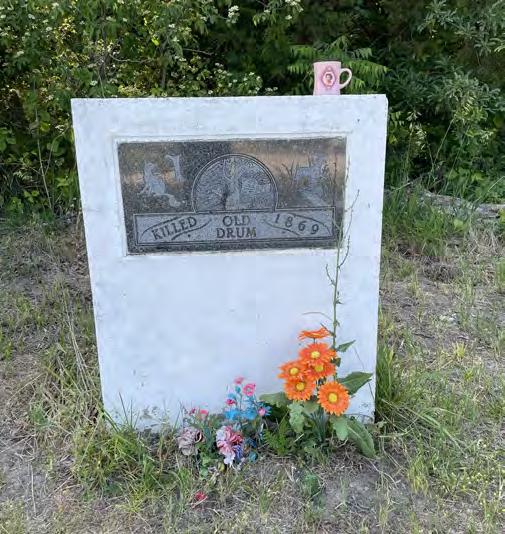
People travel this gravel road to the spot where Drum, “the dog who never lied,” died. They leave flowers, doggie treats Pennies and, on this steamy day, A pink plastic Princess Fiona teacup.
Recently, I needed to travel to a destination well west of Paducah to peruse a collection of rare papers on a Tuesday or Thursday from 1-4 p.m.

I said I would come on a Tuesday. I’d be traveling hundreds of miles, and if I needed to stay over a Wednesday, I’d need to make additional arrangements.
“Oh,” said Jenny on the phone, “I can have what you need waiting for you, and I’ll plan on getting here early, and I can always stay a little late.”
Kwiz Answers
was brutal and unhinged (or could be).
“Well, it’s right here,” she said, digging it out from under several other piles of paper on her desk. “The drivethrough lane at Wendy’s was unbelievable today. You all want some fries?”
For the next 30 minutes, Jenny was obsessed with the fries not going to waste. The fifth time she asked me, I said, “I’ll take them.”
Should I have been handling items from the archives with the same fingers as these Wendy’s fries?
“Have y’all seen Elgin?” Jenny asked. “You’d think with a name like that that he’d be on time.” Elgin?
“Well, it’s Elgin or Eldon; I’m not sure. He’s our new intern. I was going to put him to work putting up a sign for this weekend’s festival. He should be here by now.”
“I didn’t know we were getting a new intern,” Tim said.
“Yeah, he’s starting today, but I must warn you—he may not make eye contact at first. They say he’s off-thechart smart, brilliant—like professor brilliant—but they warned me that he’s altruistic.”
“Altruistic?” Tim said. “Maybe that’s why he’s volunteering.”
: 1. A. Granger commanded the Army of Kentucky in 1862 but had no other known ties to the Bluegrass; 2. C. Aug. 8 has been celebrated in Todd County since 1869; 3. A. Sanders believed the fair, which took place on his farm, to be the first held west of the Alleghenies; 4. B. Saturday night always ends with the Five-Gaited World Grand Championship; 5. True. August’s wife, Eleanor, selected the name; 6. C. Hamburg also was the home of the filly Regret, winner of the 1915 Kentucky Derby; 7. A. “Blue Moon of Kentucky”; 8. C. Sonny and Bobby Osborne’s “Rocky Top” went to No. 33 on the charts in 1967; 9. B. “A fleet-maintained” Crown Vic; 10. B. Even by frontier standards, McGary
